We crossed into Ethiopia, where the customs officials checked all our Landcruiser details carefully. More carefully in fact than any of the other countries we had entered so far on our trip.
Travelling in Ethiopia is challenging and certainly not for the faint of heart and yet it offers some of the world’s most ancient sacred religious sites and unique and unusual tribes. The ancient sites would be on the list of every traveler’s itinerary if access were not so difficult and the accommodations and facilities are often less than desirable.
Enlarge
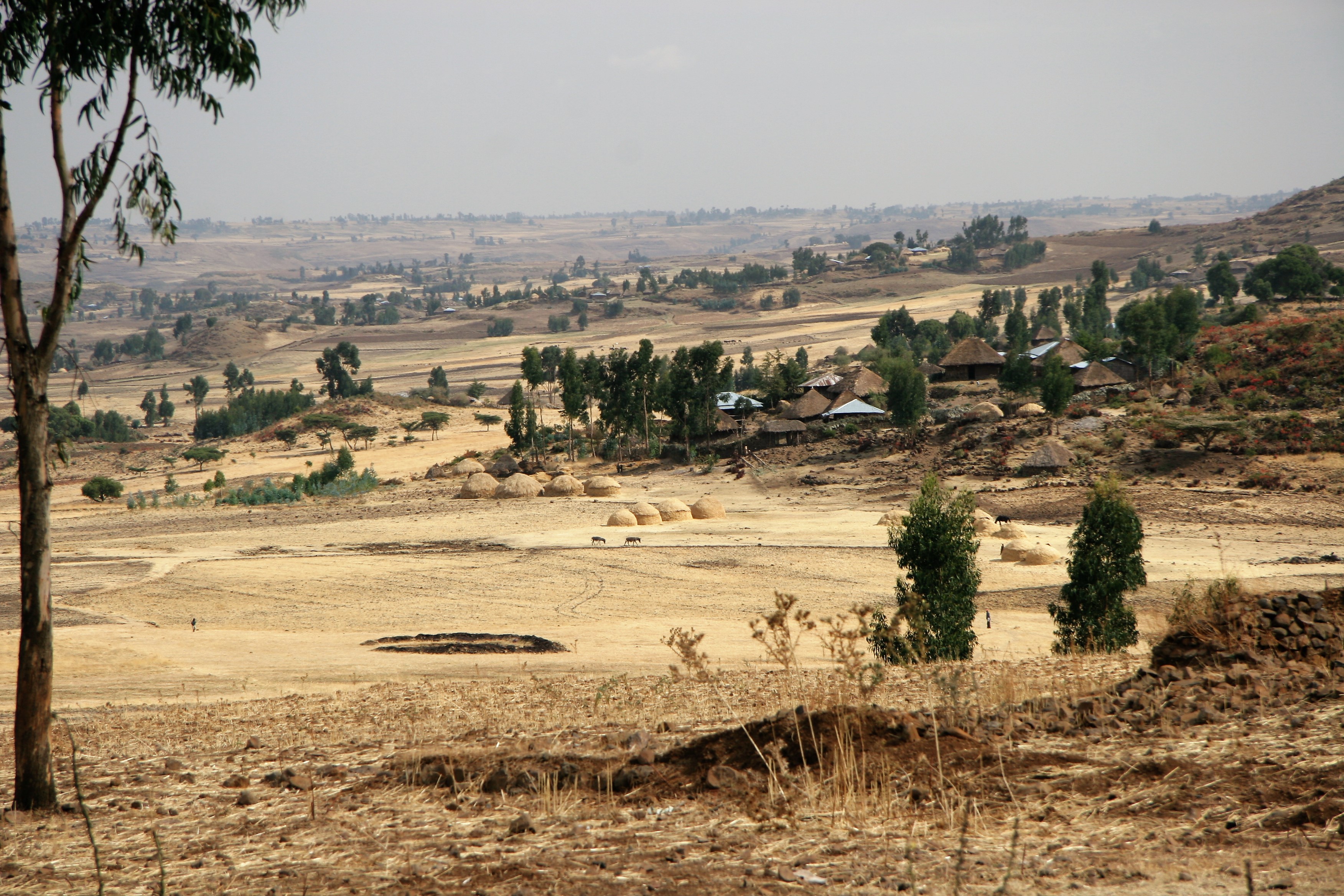
Adventurouspirits
Enlarge
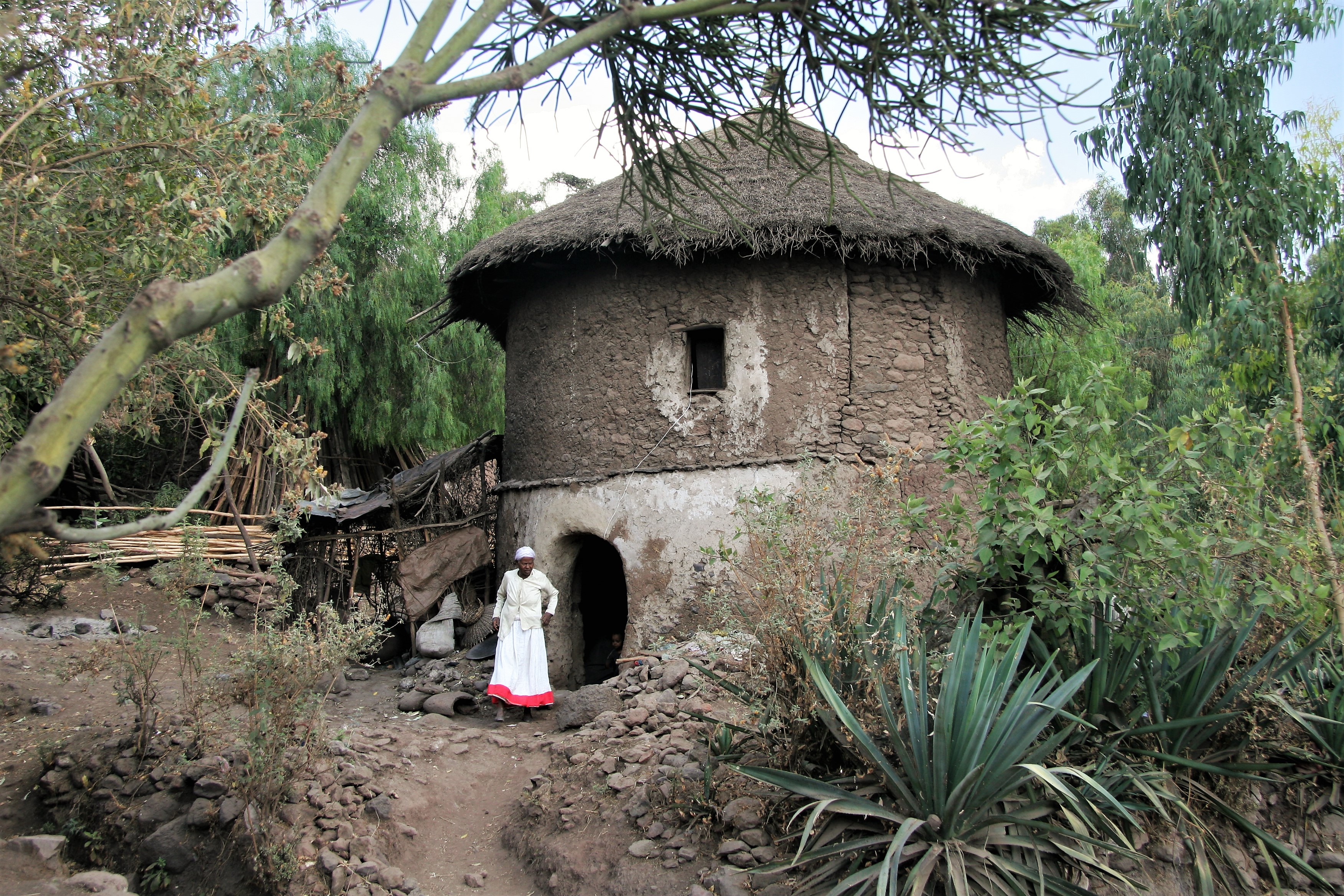
Adventurouspirits
As you cross into Ethiopia you not only enter a different country, it seems as if one also goes back many centuries. Every traveler is astounded at the complexity and uniqueness of this country. Ethiopia was the only country that was never colonized. The Italians attempted to make it a colony but they never succeeded.
Enlarge

advneturouspirits
70 Million people live in Ethiopia and it soon becomes apparent that a large number of them use the roads to transport goods and supplies. Very few of them own vehicles so they have little car sense. We will have to drive very carefully as we head to Addis Ababa.
Enlarge

Adventurouspirits
Enlarge
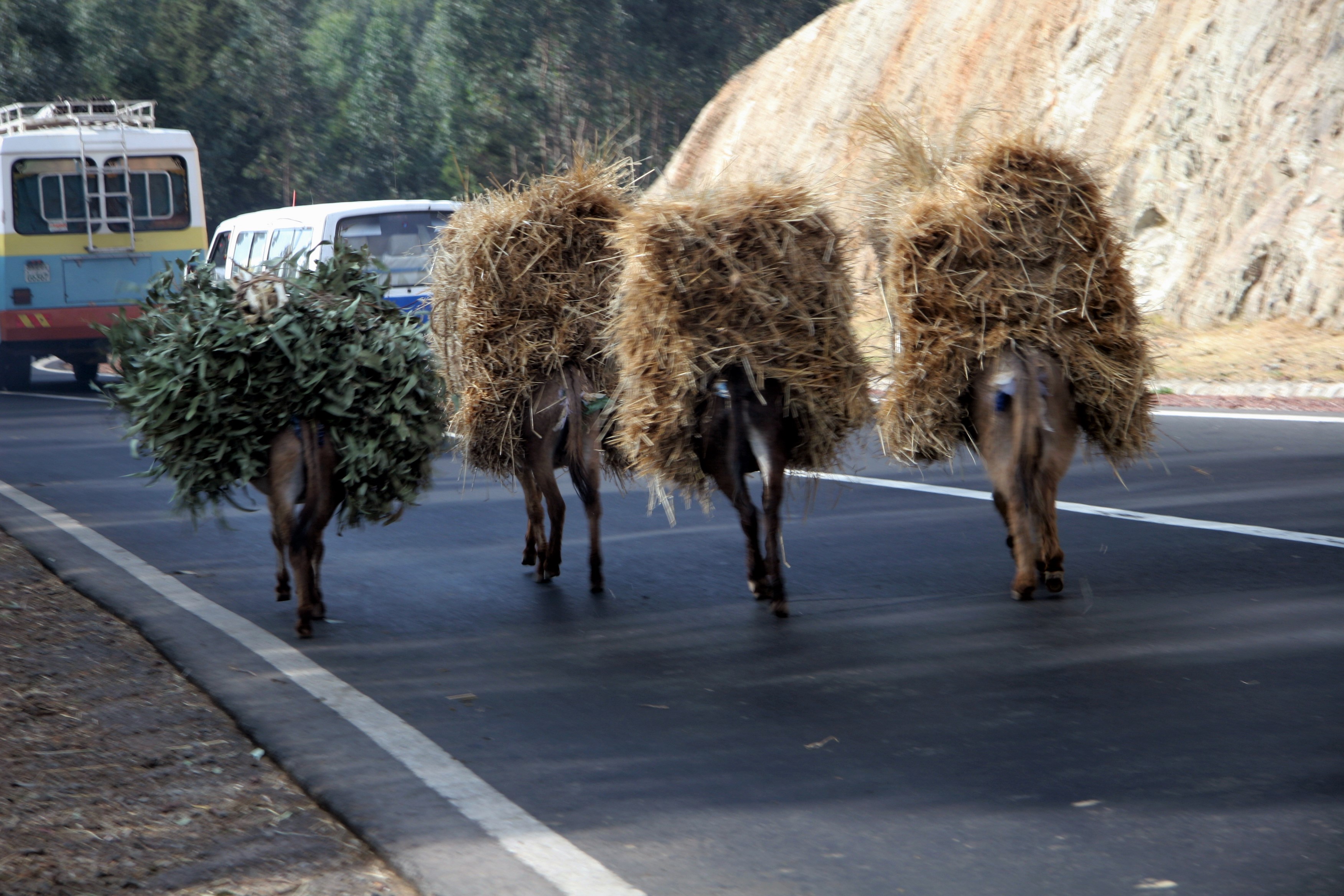
Adventurouspirits
Rural Ethiopians use local wood and dung for cooking and heating. These woman have a permanent bend in their spines from years of carrying supplies to their customers.
Enlarge
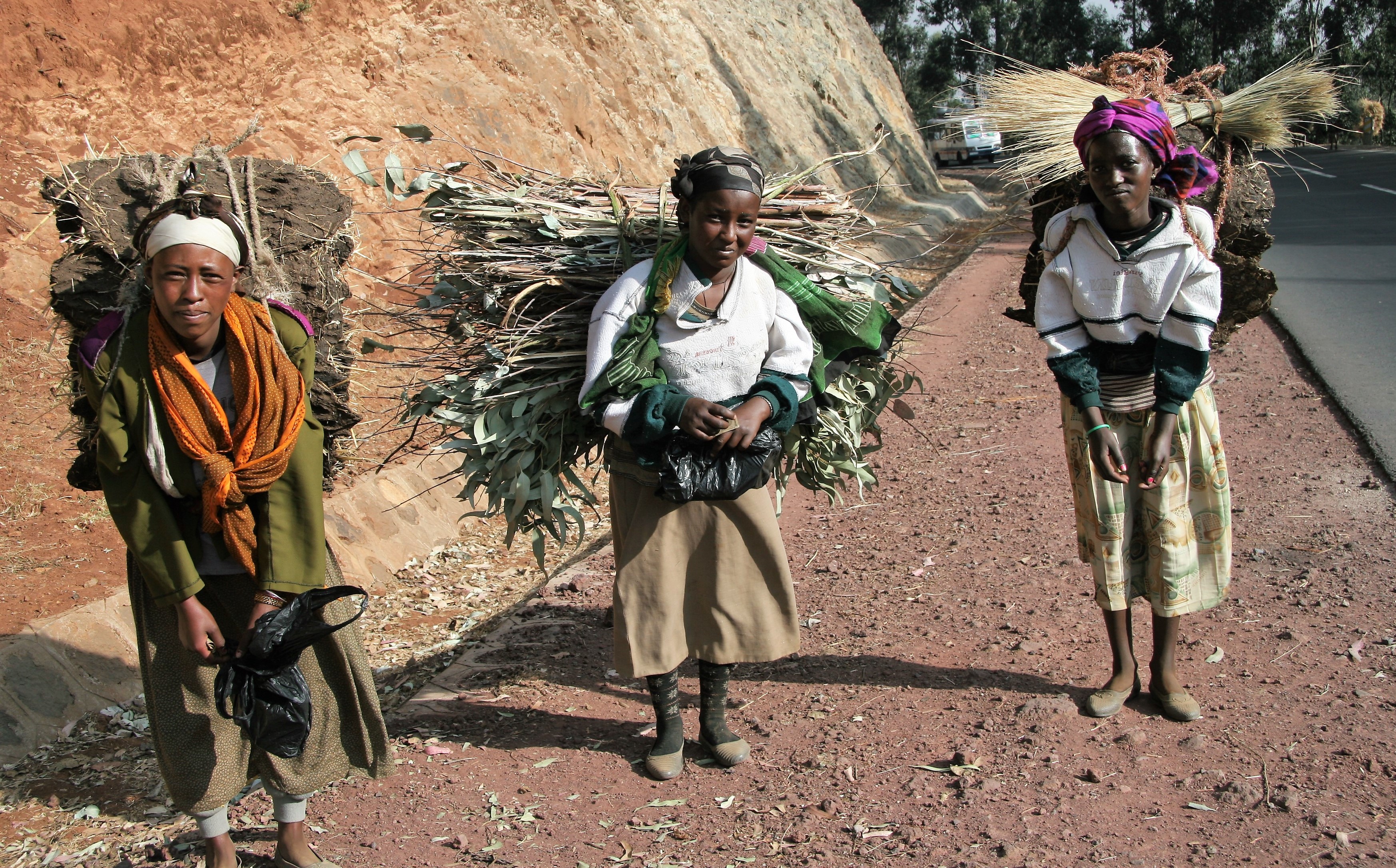
Adventurouspirits
Military artifacts are reminders of Ethiopia’s tumultuous history.
Enlarge
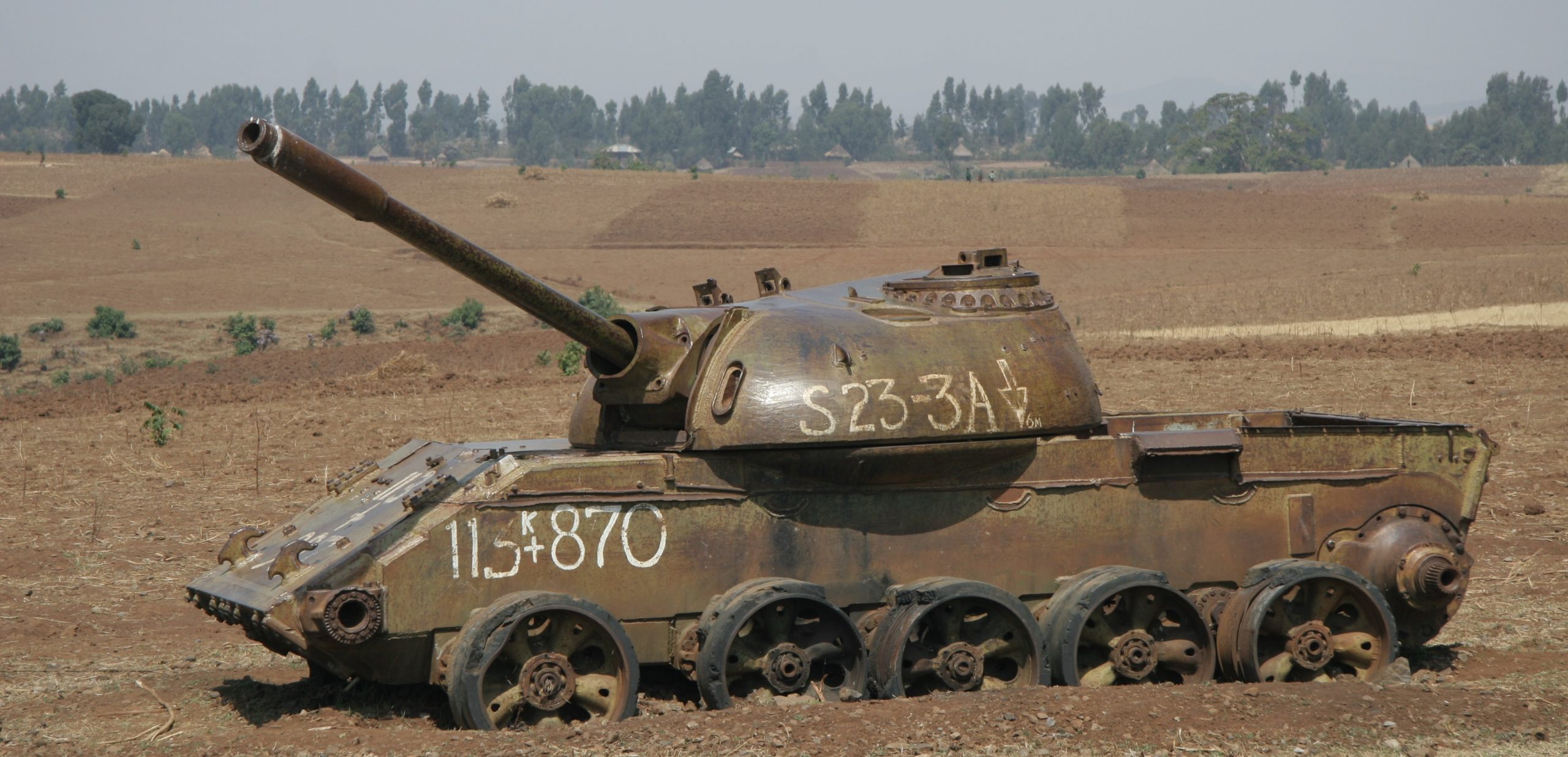
Adventurouspirits
We were warned that the children were hostile and that they might throw rocks at our vehicle as some of our fellow travellers had experienced on their journeys through Ethiopia. We were fortunate not to encounter that behaviour as we drove deeper into the country. Very few kids appeared to be in school. We saw many of them selling Khat, used to make tea or chewed like a tobacco leaf. It is a stimulant which has a similar effect to Marijuana.
Enlarge

Adventurouspirits
Foosball is a popular sidewalk activity.
Enlarge

Adventurouspirits
Ethiopians are very tolerant of each others religious faiths. They are mostly Orthodox Christians, followed by Muslims and there is a small Jewish community. They could teach the world how to live in harmony. Orthodox churched dot the countryside and priests are happy to show you around. Ancient texts and brightly coloured biblical scenes adorn the walls and windows
Enlarge
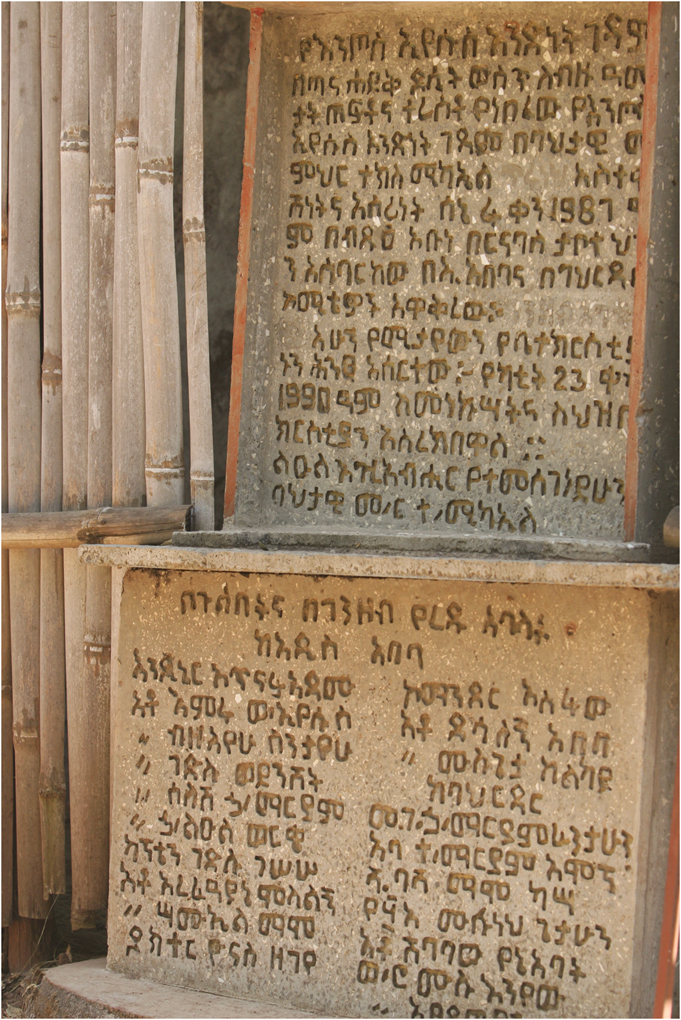
Adventurouspirits
Enlarge
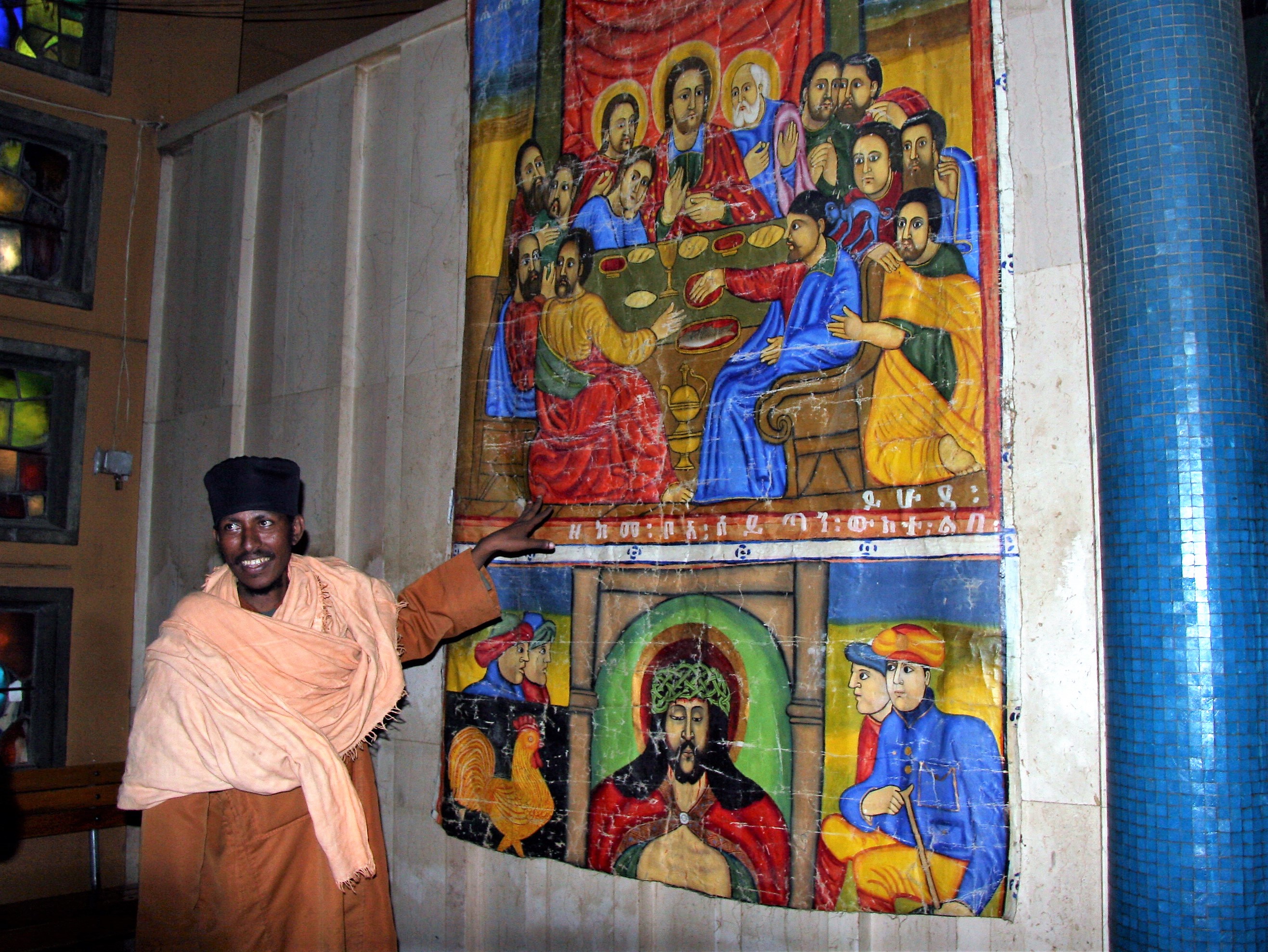
Adventurouspirits
Enlarge

Adventurouspirits
Addis Ababa Ethiopias bustling capital is where we will camp for a few days. We head for the Baro Hotel which will allow overlanders to camp in its parking lot. Here we meet a number of other overlanders heading north and south. It is not fancy but the price is right and it is secure. You can also book a room for an hour which is enough time to shower and clean up.
Enlarge
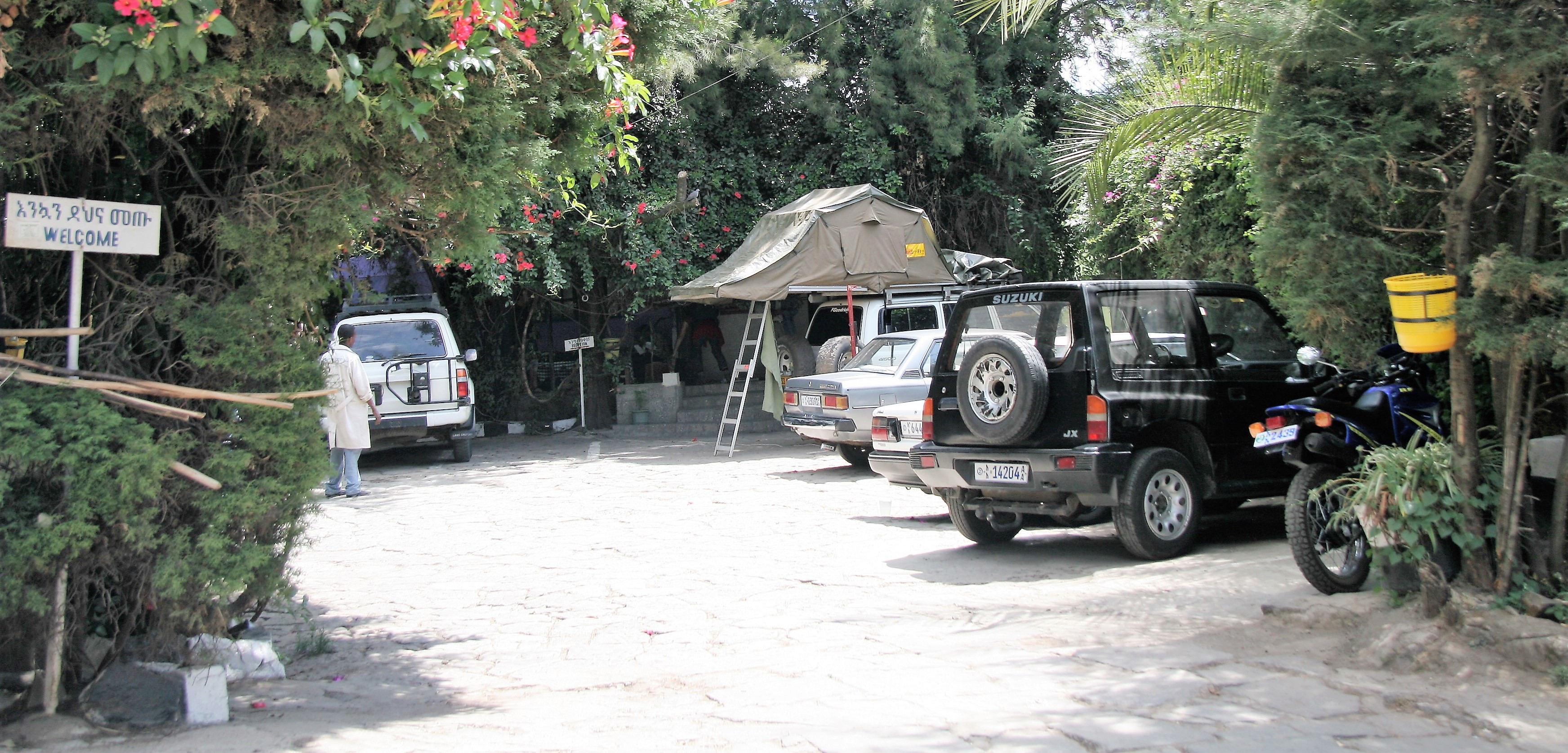
Adventurouspirits
We wondered the street of the capital enjoying macchiatos, Injera, and the unique culture.
Enlarge

Adventurouspirits
We visited Hailee Salassis house as well as the museum housing the skeleton of Lucy. In Ethiopia, she is is also known as Dinkinesh, which means “you are marvellous” in the Amharic language. Lucy was discovered in 1974 in Africa, near the village Hadar in the Awash Valley of the Afar Triangle in Ethiopia. The Lucy specimen is an early australopithecine and is dated to about 3.2 million years ago. Lucy” acquired her name from the song “Lucy in the Sky with Diamonds” by the Beatles, which was played loudly and repeatedly in the expedition camp all evening after the excavation team’s first day of work on the recovery site. After public announcement of the discovery, Lucy captured much public interest, becoming a household name at the time.
Ethiopians are not wealthy and they live in simple dwellings.
Enlarge

Adventurouspirits
Enlarge
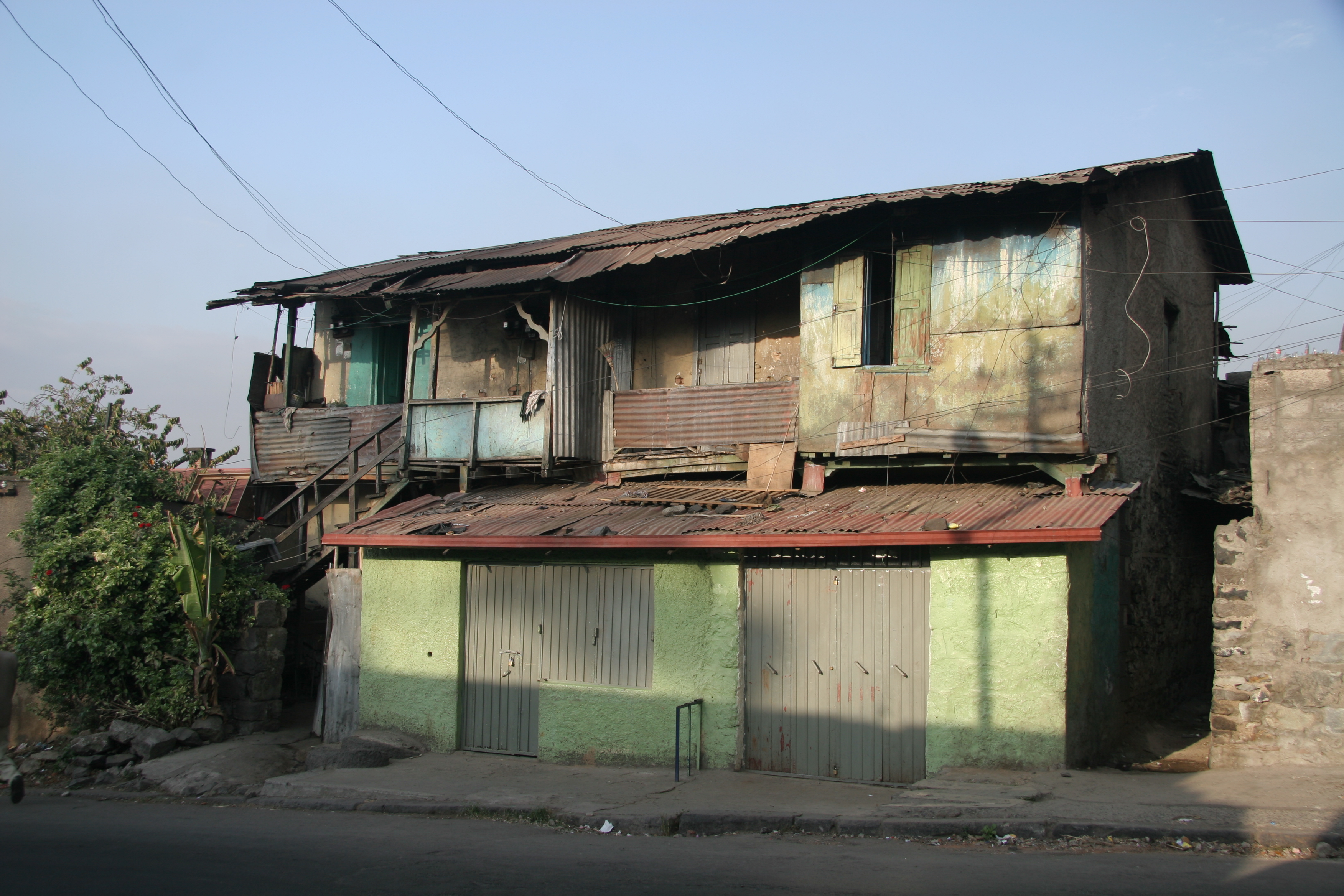
Adventurouspirits
Having heard only stories of famine and poverty in Ethiopia we were surprised to see that Addis had a fancy Sheraton Hotel, frequented by visiting dignitaries and aid workers. We splurged shelling out big bucks for a juicy burger.
Enlarge
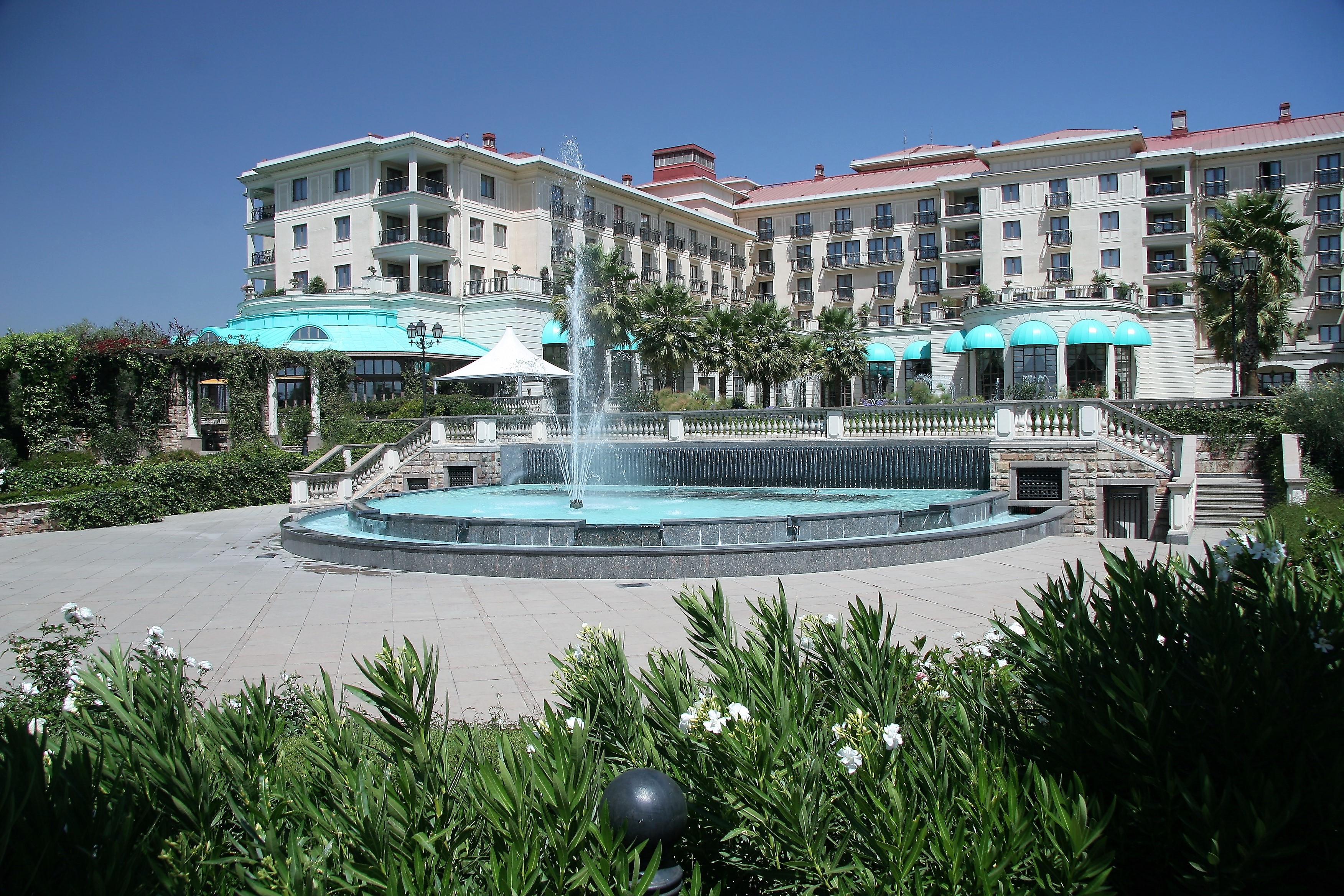
Adventurouspirits
It was time to head north. Our first destination was the town of Bahir Dar on the shores of Lake Tana. Lake Tana is the source of the Blue Nile, which meets the White Nile in the city of Omdurman in Sudan. The Blue Nile has created a excavated an impressive gorge which we have to cross. The steep winding road down and up the other side is being upgraded.
Enlarge
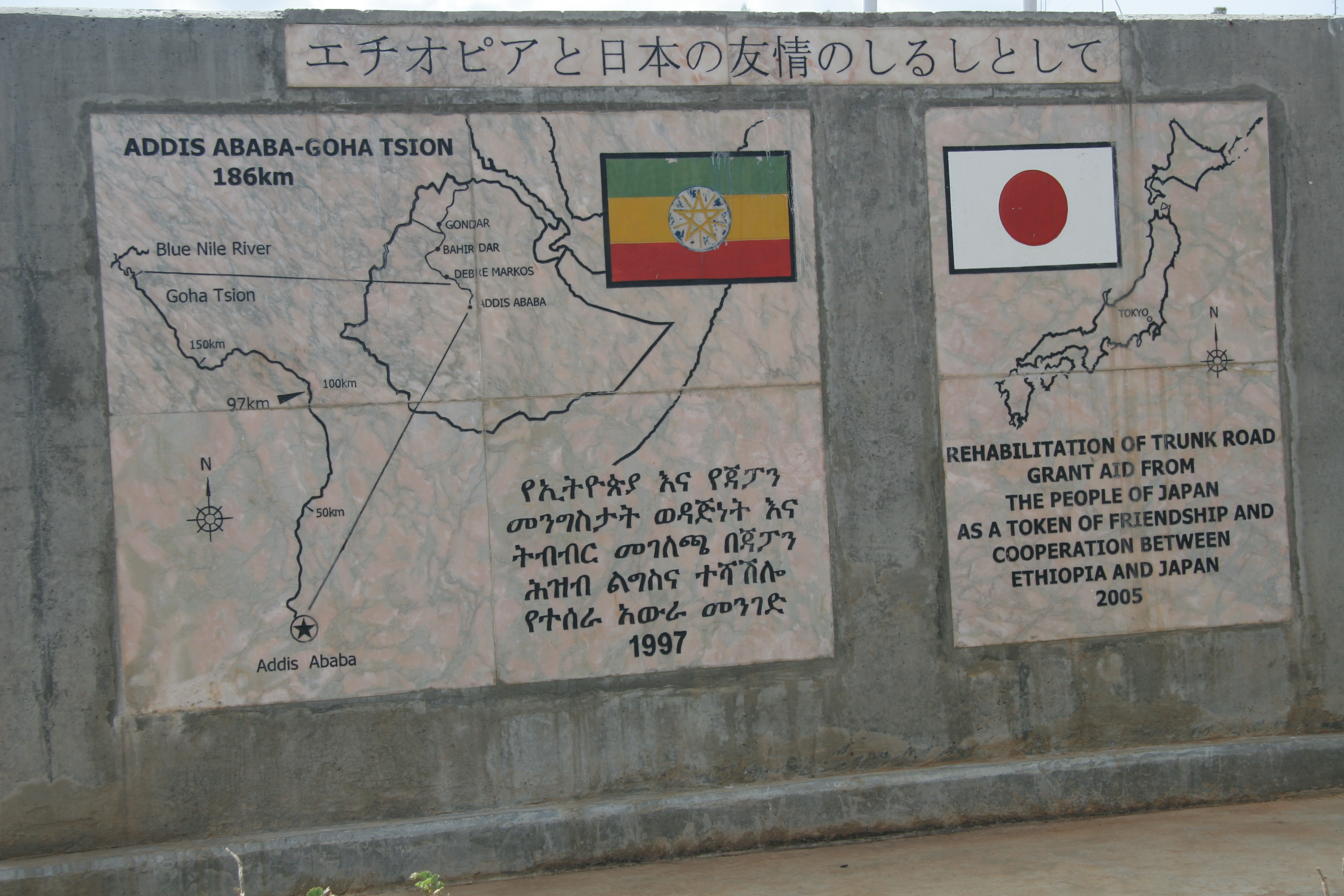
Adventurouspirits
We bide our time waiting for the construction crews to allow us to pass in a small coffee shack. A TV is blaring out “Ethiopian Idol”. Globalization is taking over the planet.
Enlarge
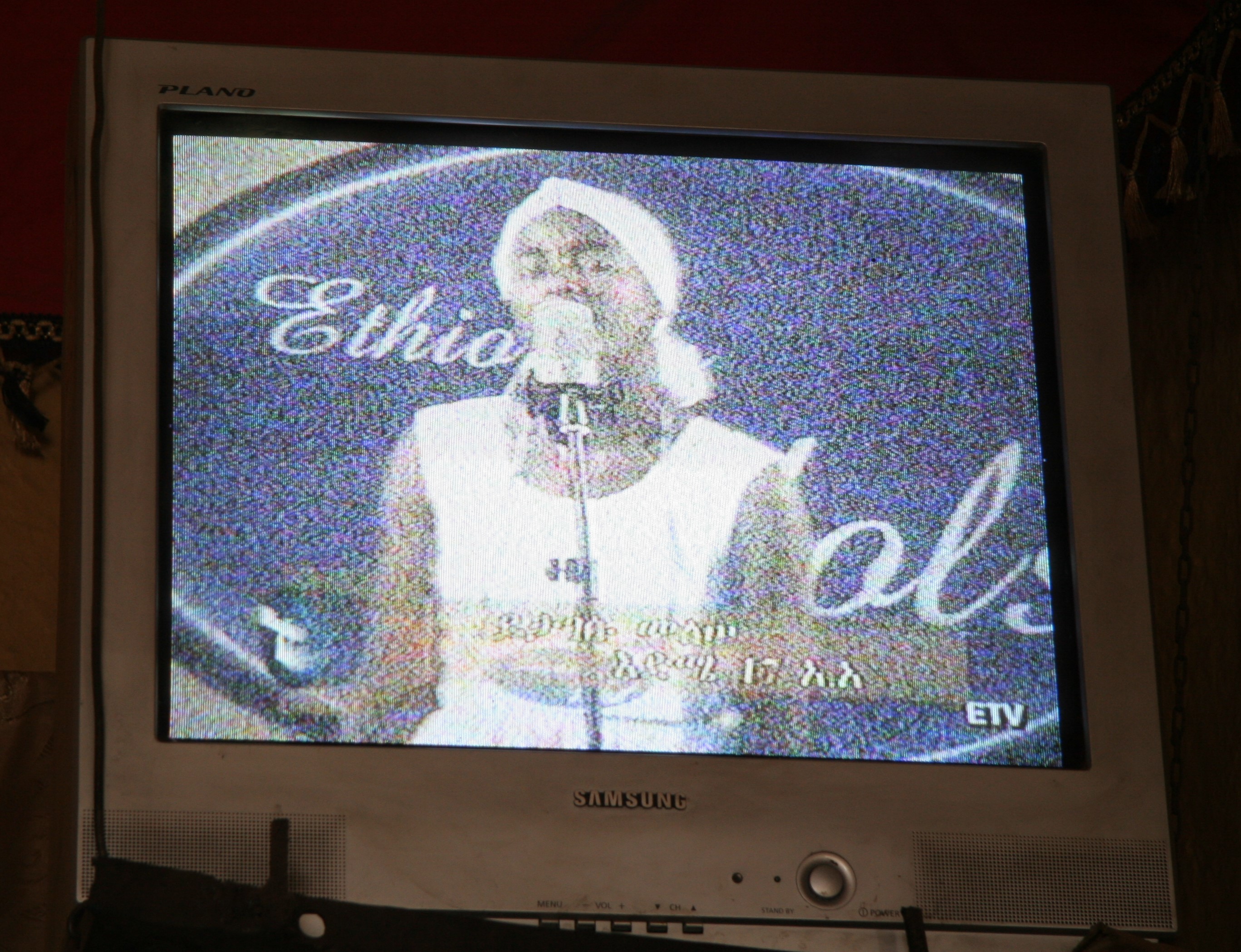
Adventurouspirits
Eventually we are allowed to proceed.
Enlarge

Adventurouspirits
Lake Tana has a number of islands on some of which are interesting ancient religious sites and churches. We were able to arrange a visit to one of them but unfortunately the women could not accompany us.
Enlarge
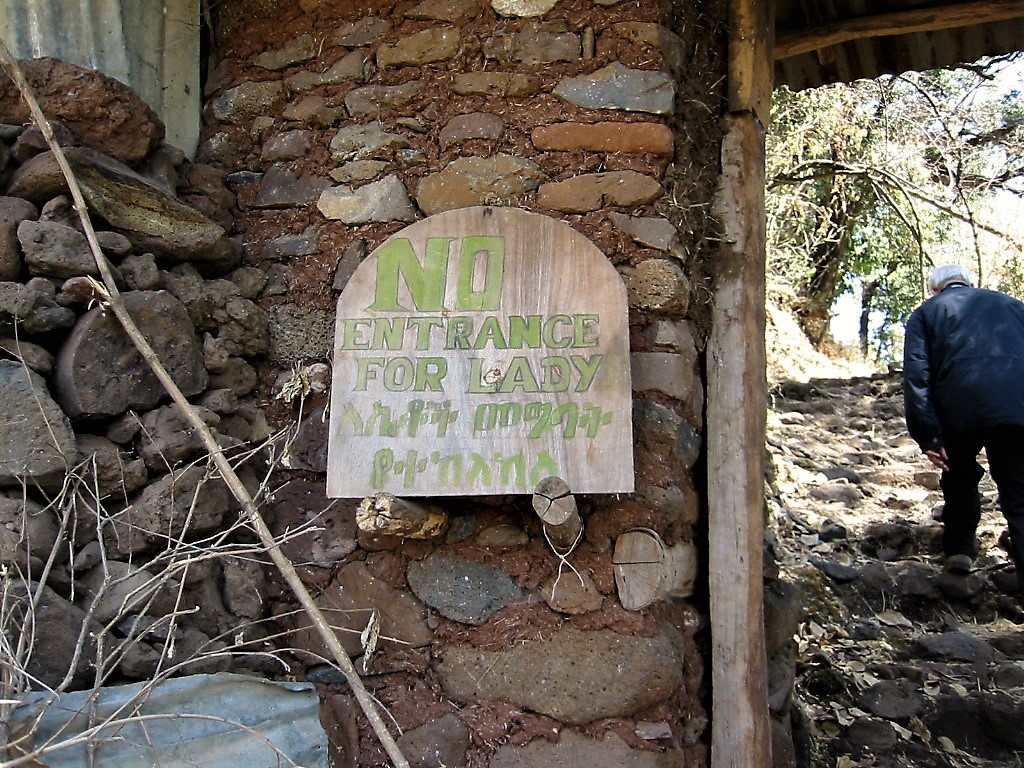
Adventurouspirits
Enlarge
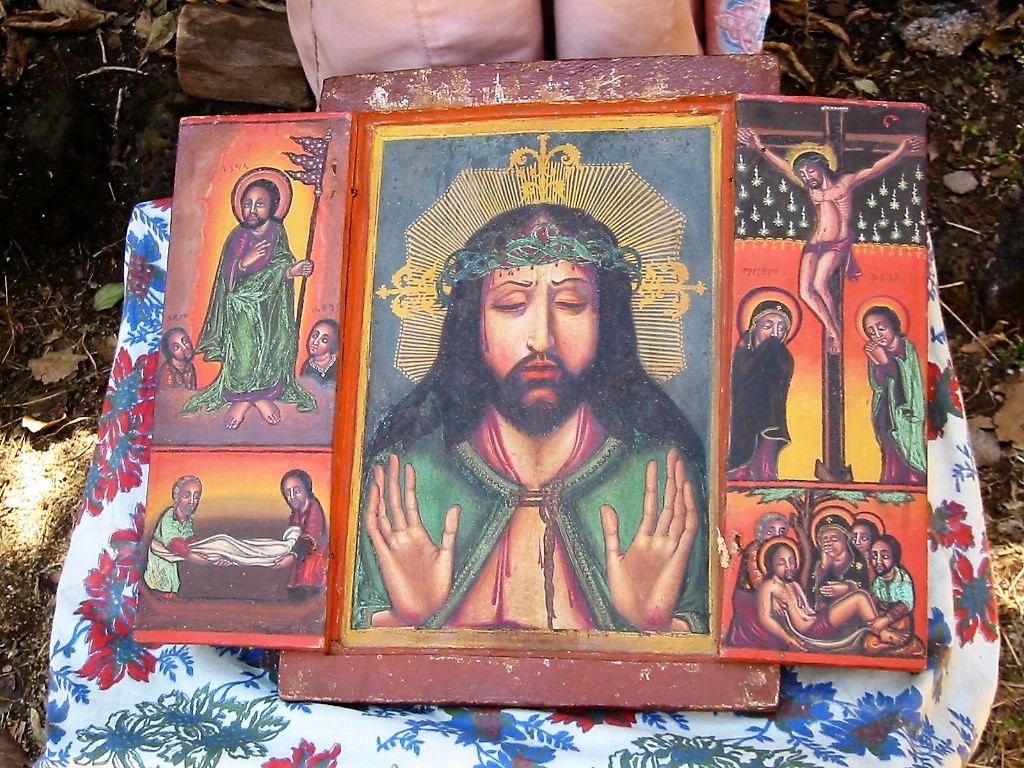
The ancient feel to the area is enhanced by the presence of boats made of papyrus used by the locals as transport across and around the lake.
Enlarge

Adventurouspirits
A short distance after exiting Lake Tana the waters’ which then make up the Blue Nile tumble over an escarpment on their long journey to merge with the White Nile and then onto the Mediterranean.
Enlarge
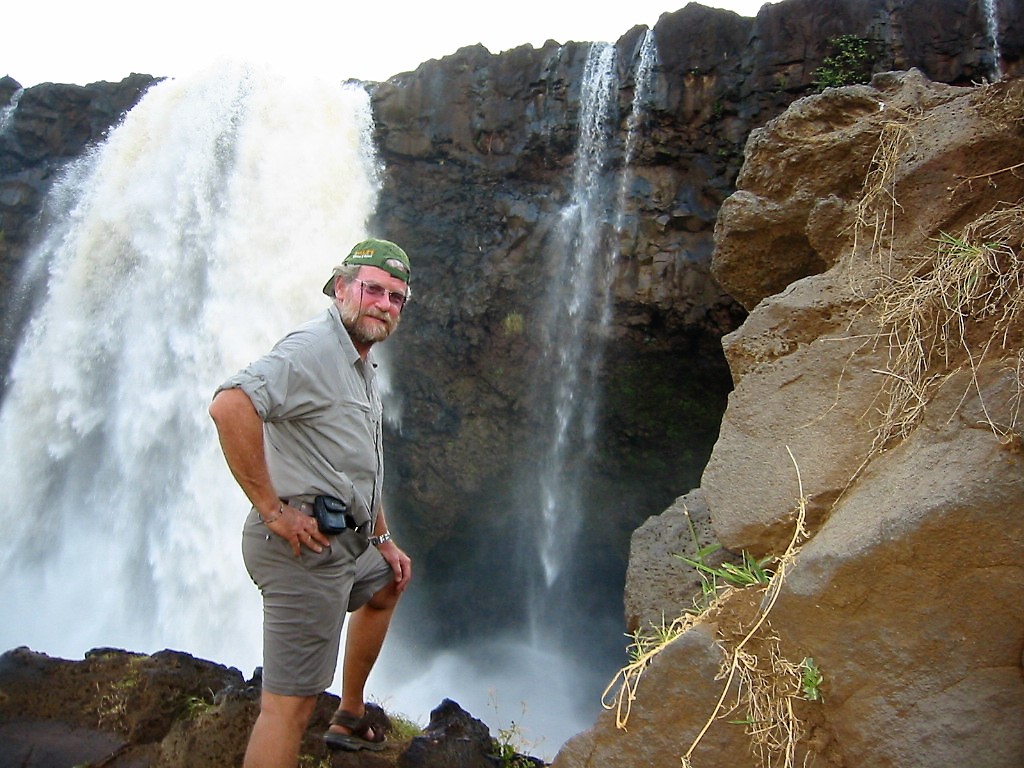
Adventurouspirits
Enlarge
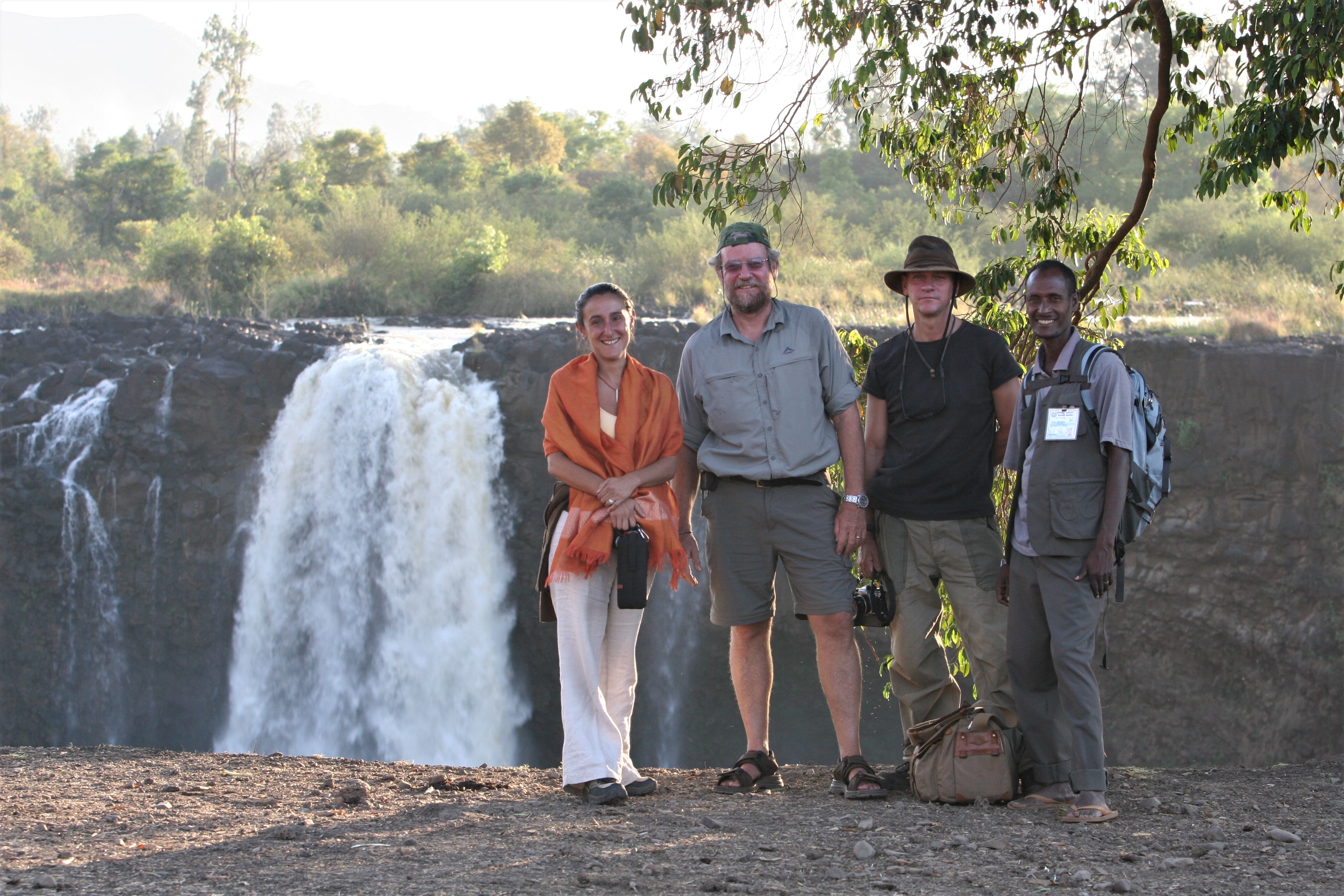
We meet all kinds of travellers on the road. Peter and Kay Forwood fo Australia were travelling south on their Harley passing through Bahir Dar at the same time we were.
They were travelling to every country in world on their bike. It was inspirational to hear their stories and adventures. Sometime when we were tired and didn’t feel like going on we thought of them.
In one of the villages we passed through we came saw this young woman fetching water. It did look like a scene out of biblical times.
Enlarge
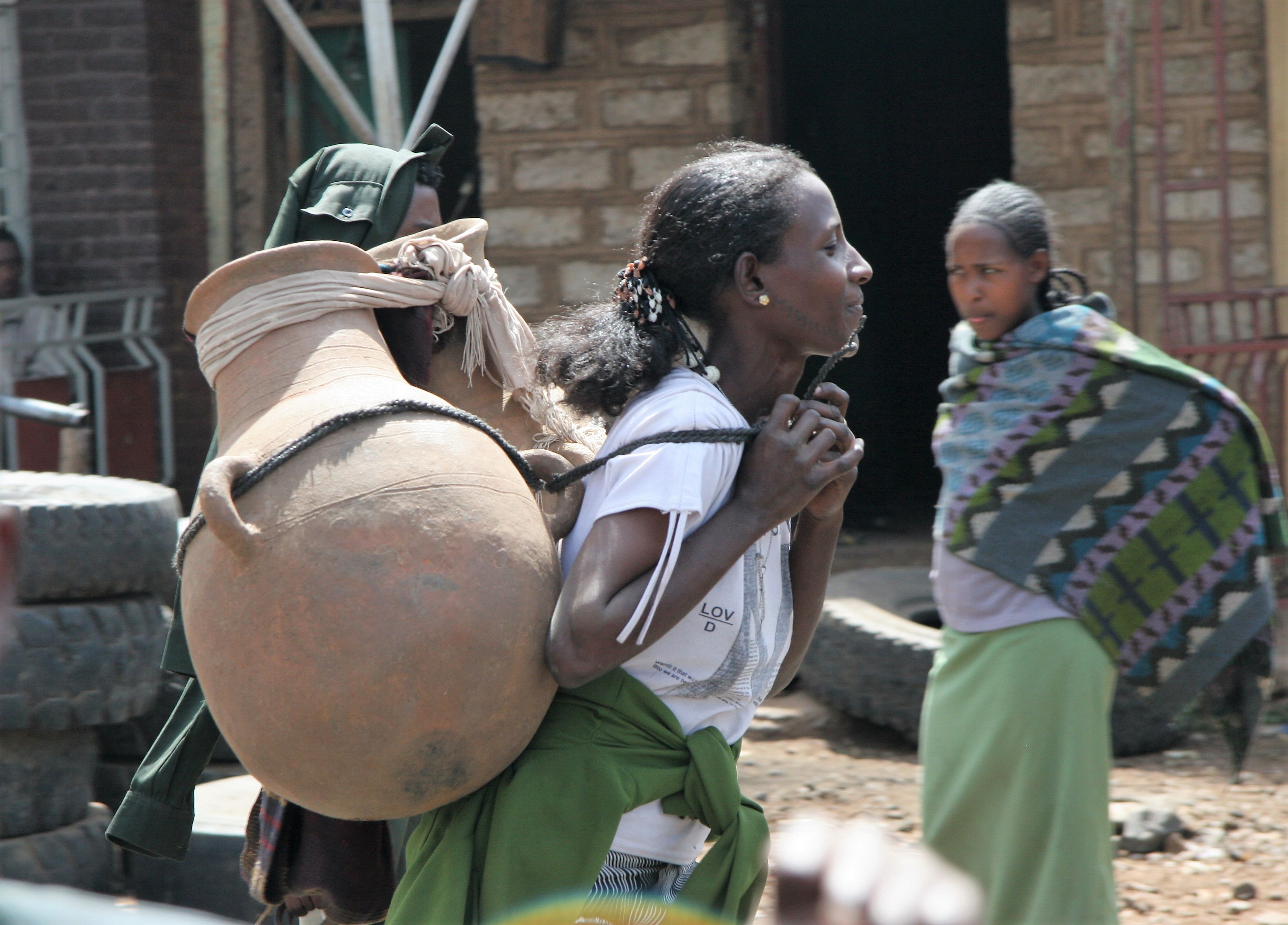
Adventurouspirits
Gondar is a royal and ancient historical city of Ethiopia. It was the home of many emperors and princesses who led the country from the 12th century to the last decade of the 20th century. There is so much interesting history in Ethiopia.
Enlarge
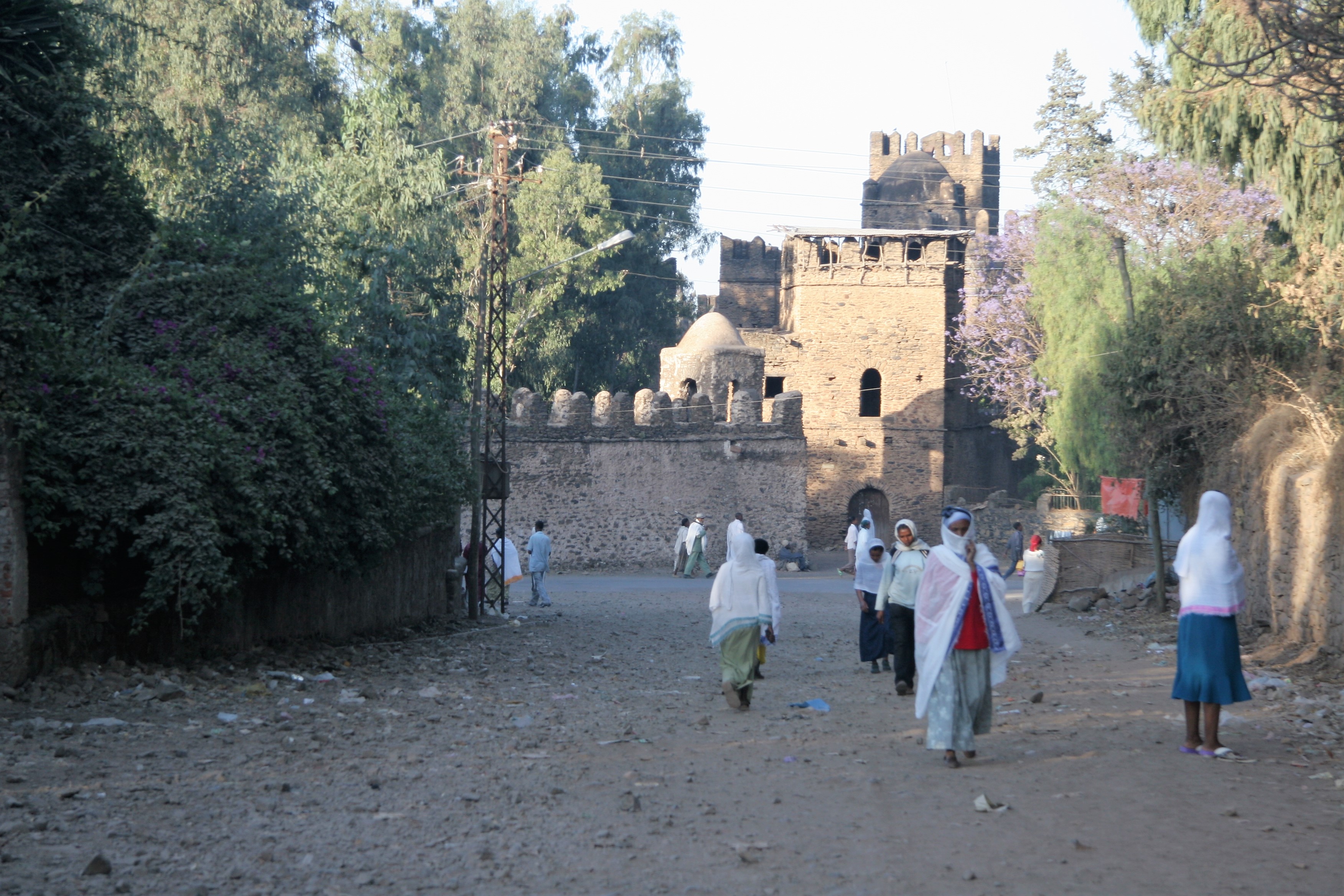
Adventurouspirits
Enlarge

Adventurouspirits
Enlarge

Adventurouspirits
Enlarge
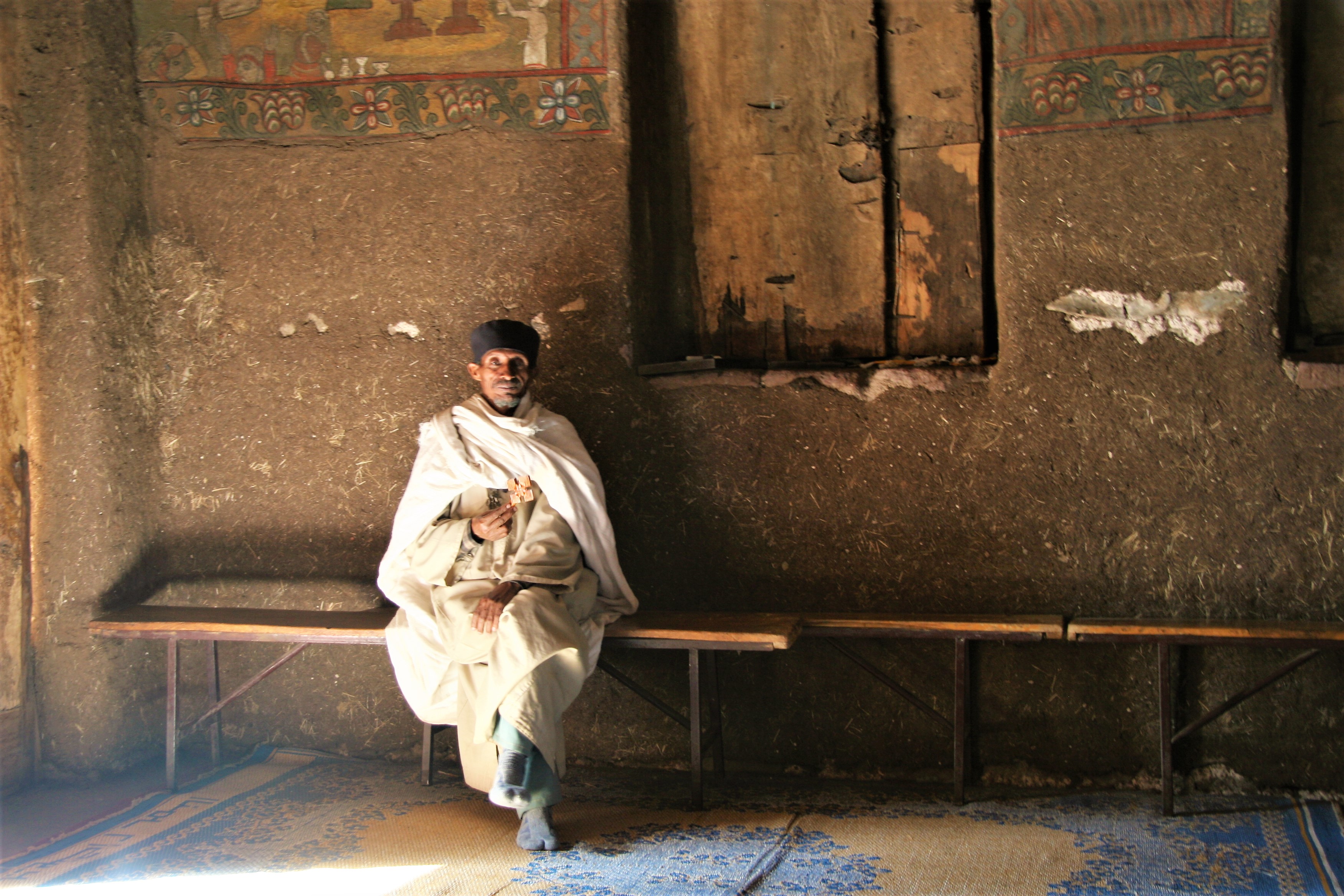
Adventurouspirits
Enlarge

Adventurouspirits
Locals are employed restoring some of the old structures which have been ravaged by the elements over time.
Enlarge

Adventurouspirits
We camp in the parking lot of a local hotel which provides all the basic necessities.
Enlarge
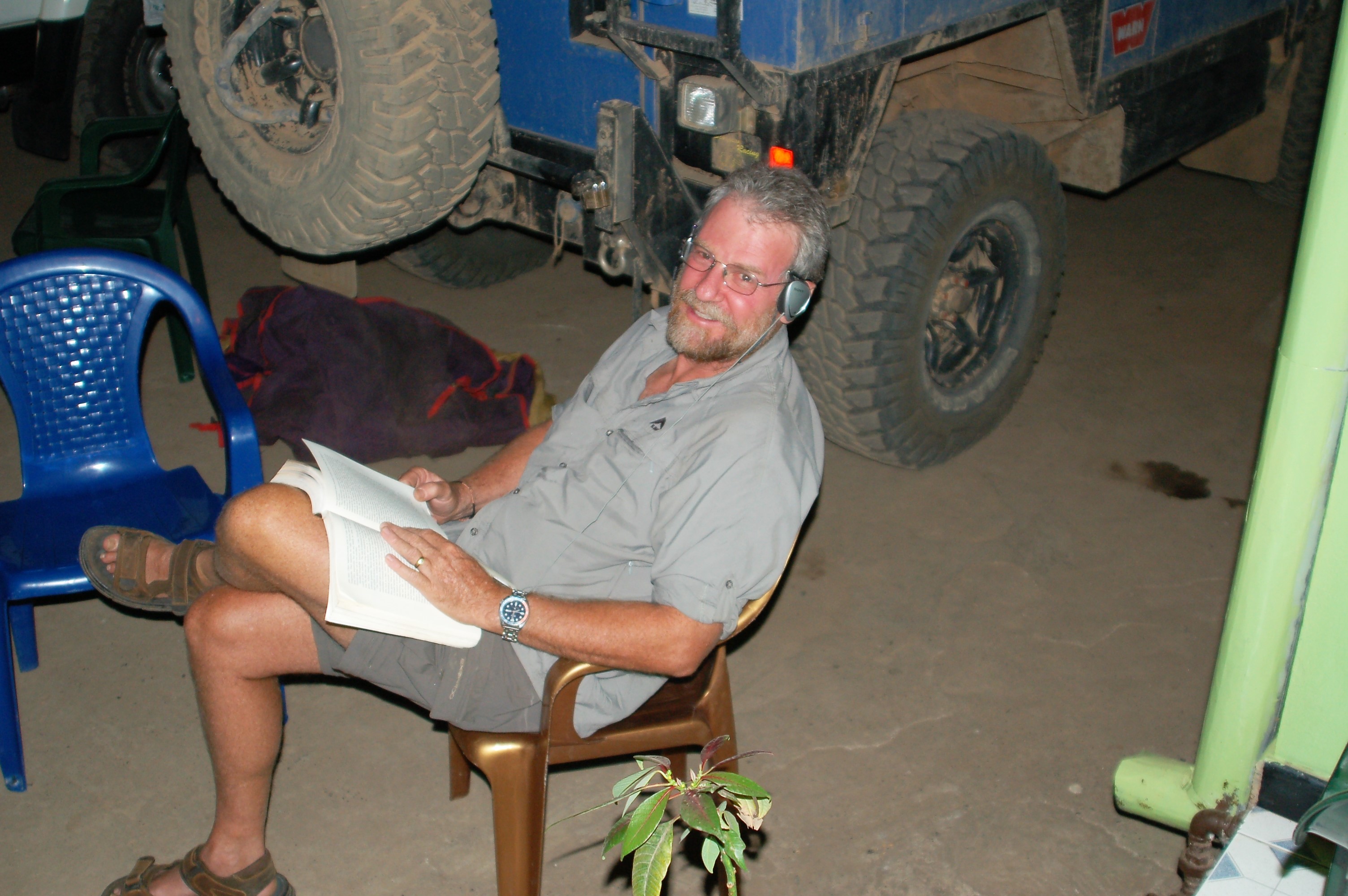
Adventurouspirits
We decide to fly to the famous mountain village of Lalibella from Gondar because we hear from fellow travellers that their vehicles were pelted with rocks as they passed through some of the villages en route.
Enlarge
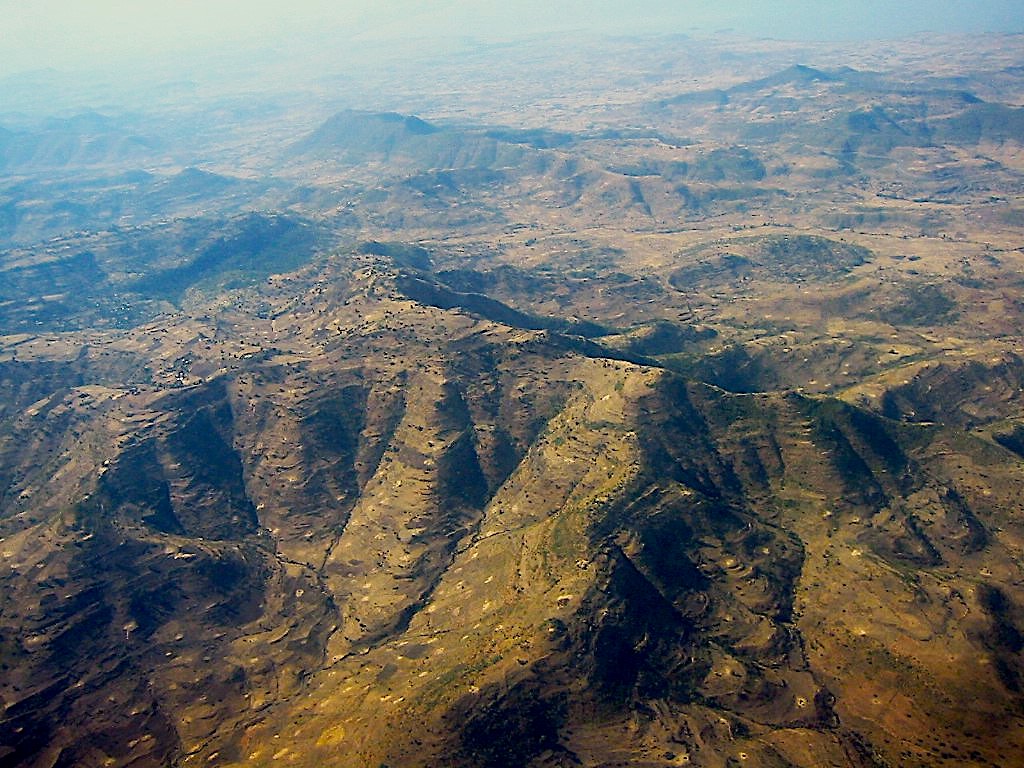
Adventurouspirits
Lalibela is known around the world for its churches carved from within the earth from “living rock,” which play an important part in the history of rock-cut architecture. Though the dating of the churches is not well established, most are thought to have been built during the reign of Lalibela, namely during the 12th and 13th centuries. Because this is such an interesting place to visit we hire a local guide, Mesfin to show us around.
Enlarge
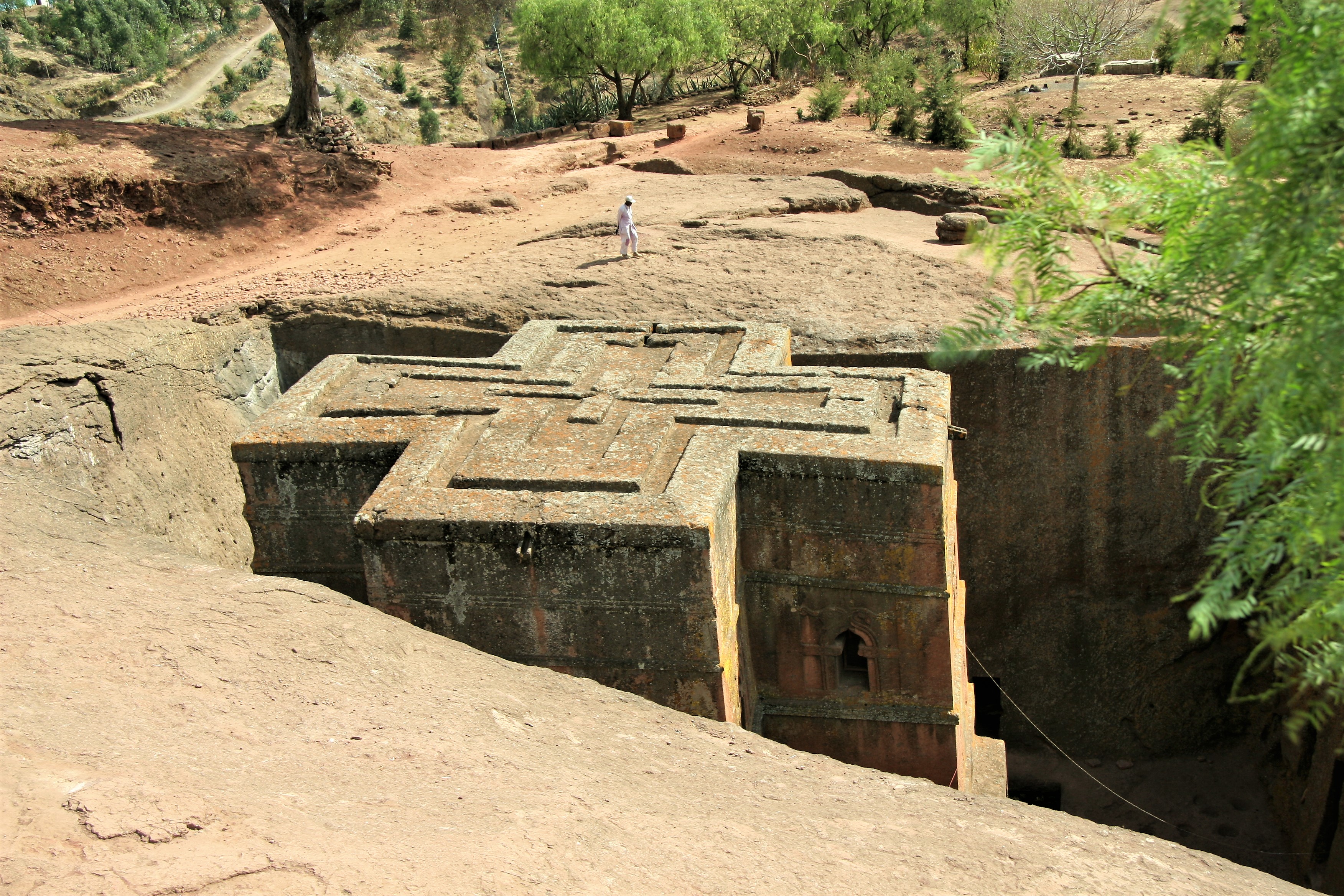
Adventurouspirits
Enlarge
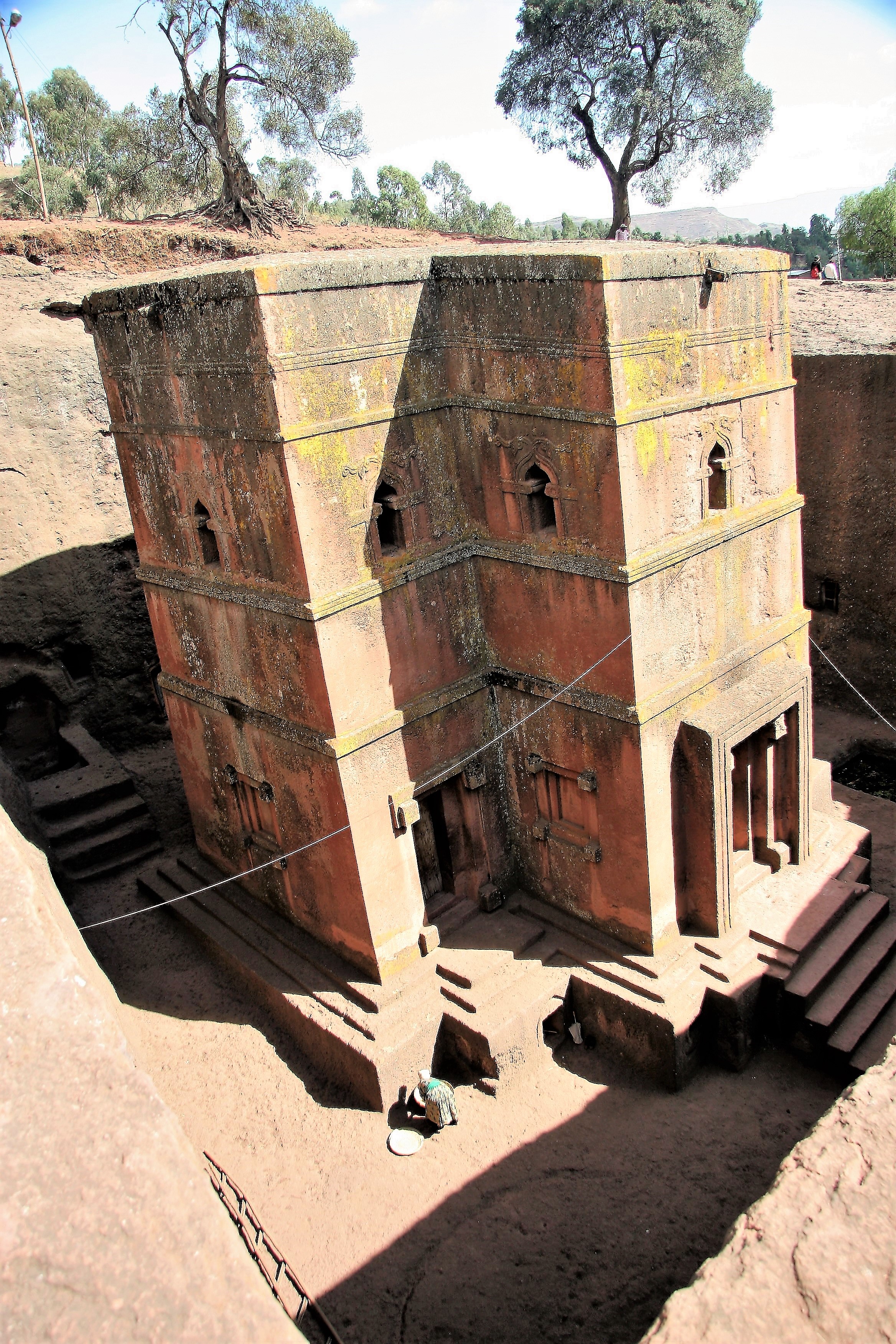
Adventurouspirits
These are living churches not historic monuments.
Enlarge
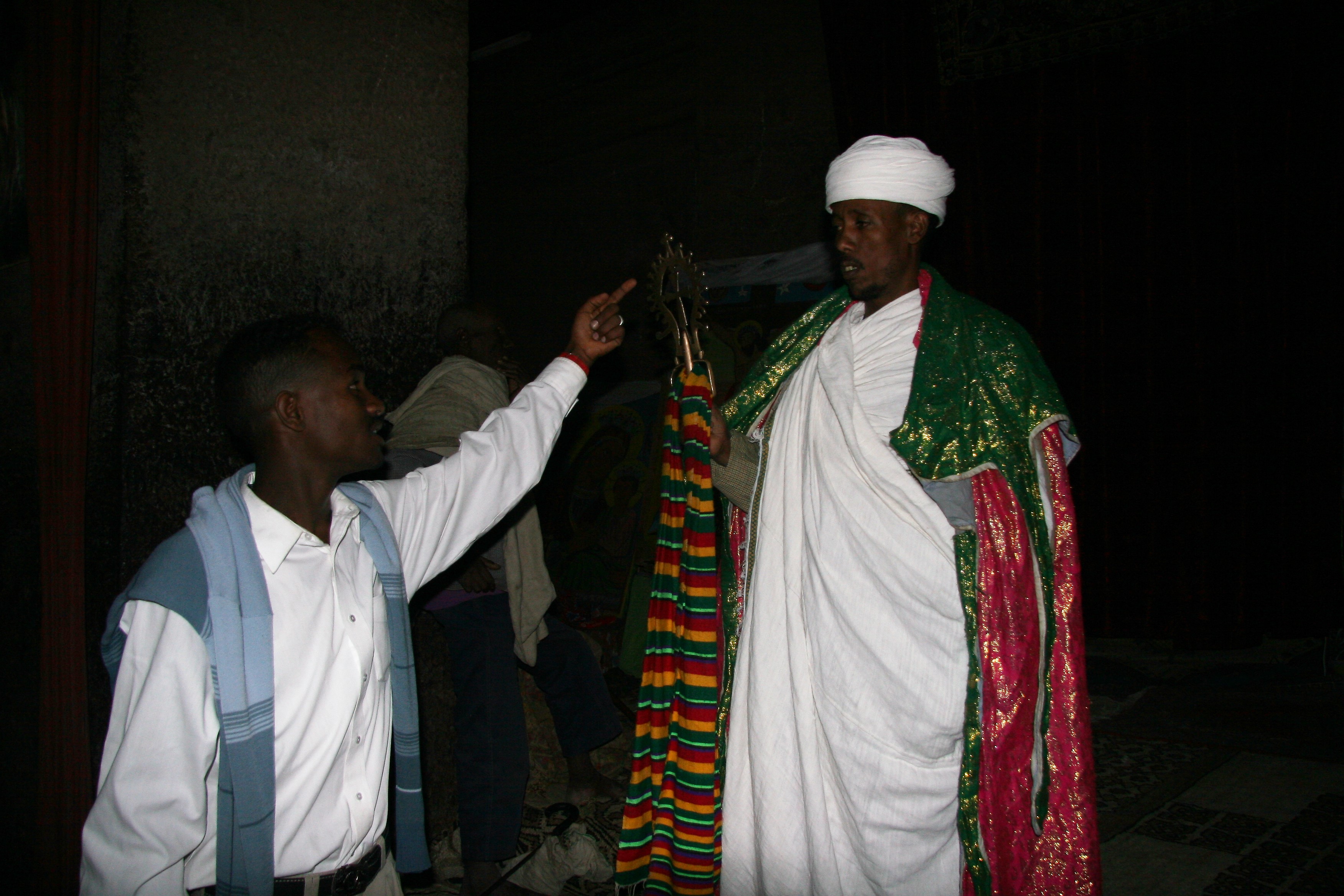
Adventurouspirits
Enlarge

Adventurouspirits
Enlarge
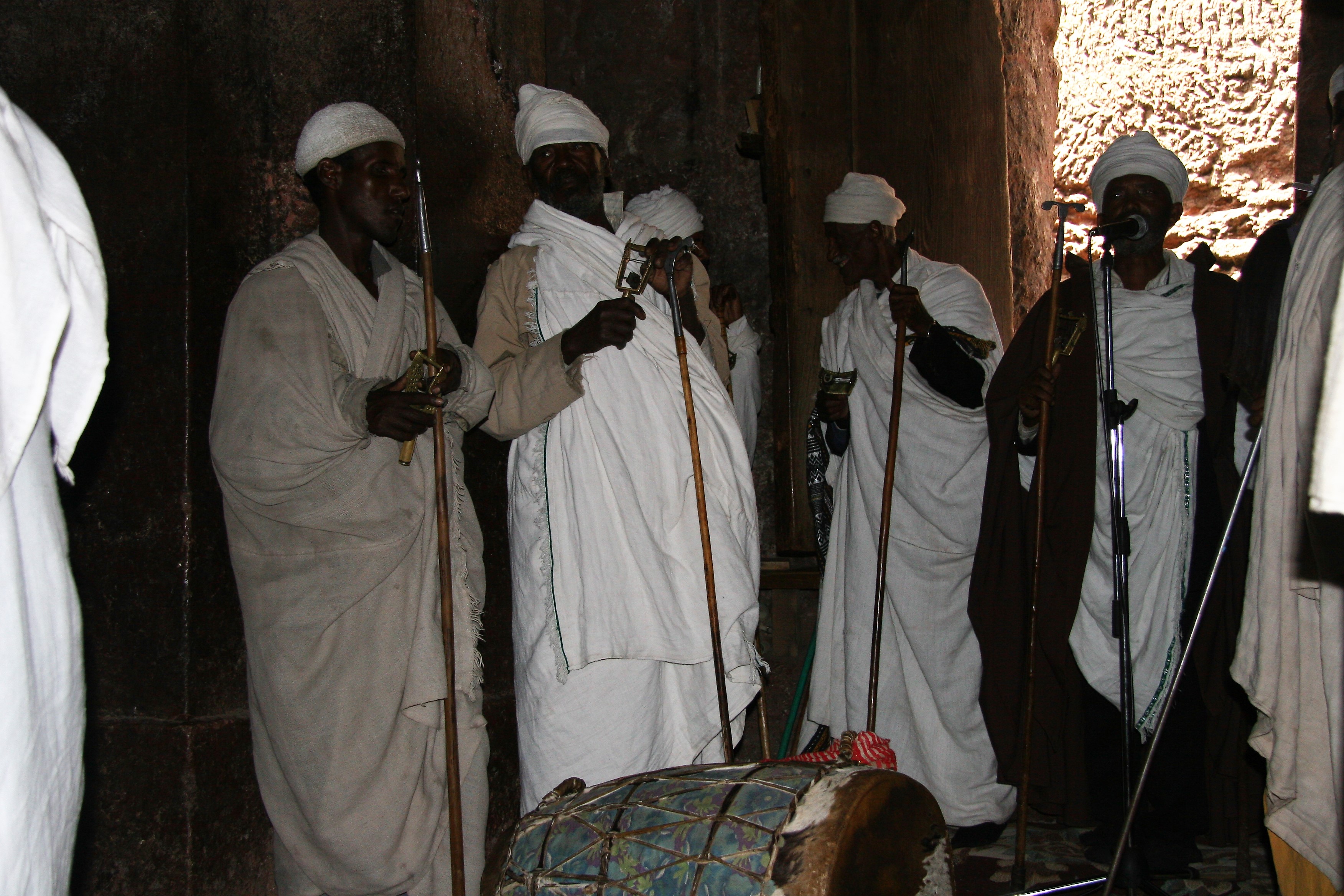
Adventurouspirits
I weary of writing more about these buildings, because it seems to me that I shall not be believed if I write more...I swear by God, in Whose power I am, that all I have written is the truth Francisco Alvares (1465-1540)
We decide to trek into the surrounding hills to see a church carved into the rock face high above the village. Janet decides to go by pony, while I decide to get some much needed exercise.
Enlarge
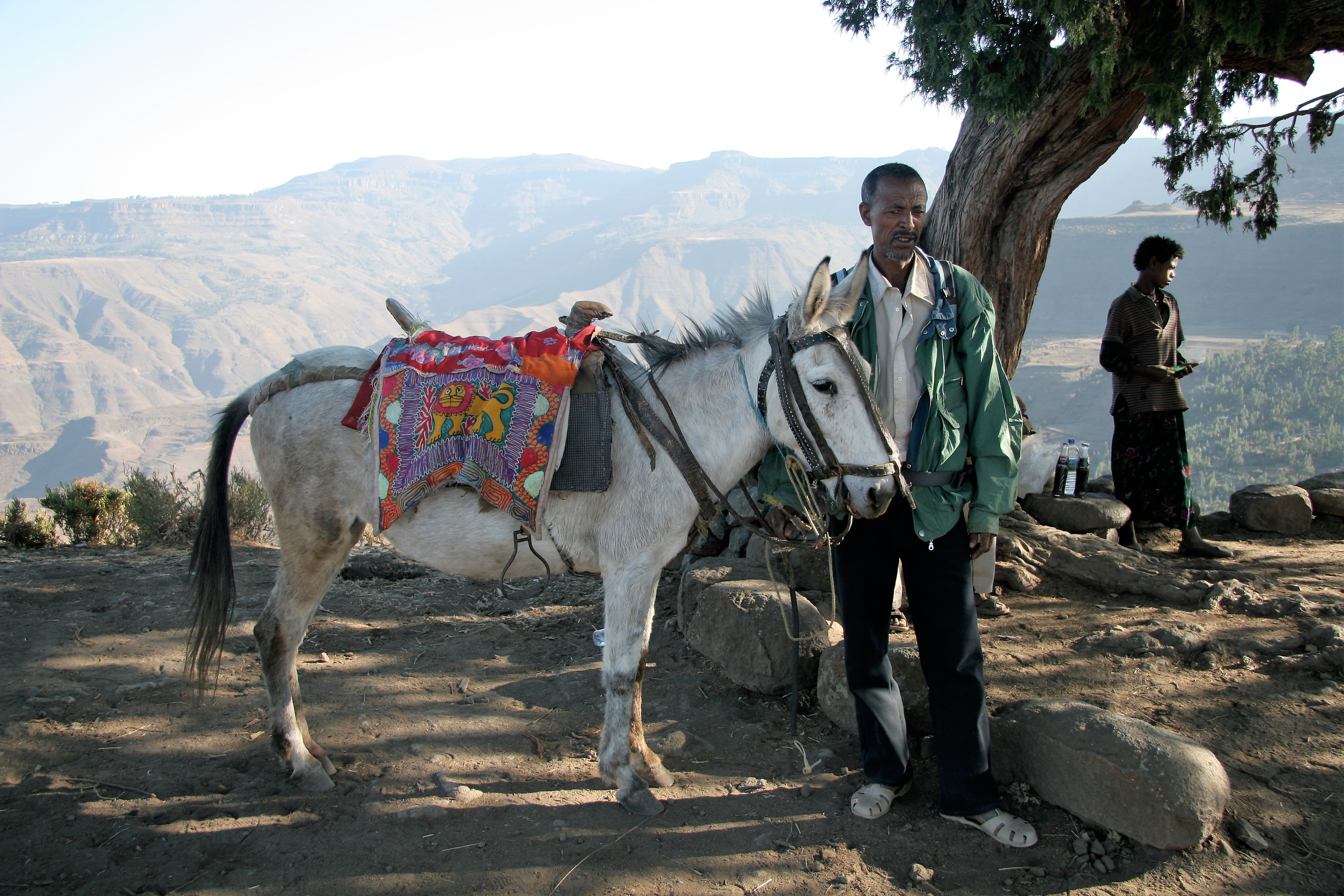
Advneturouspirits
On the trek up the mountain we meet this young girl acting as a guide for a blind adult. When we asked about the odd hairstyle, we were told that is just in case the young girl dies, God has a handle to take her up to heaven.
Enlarge
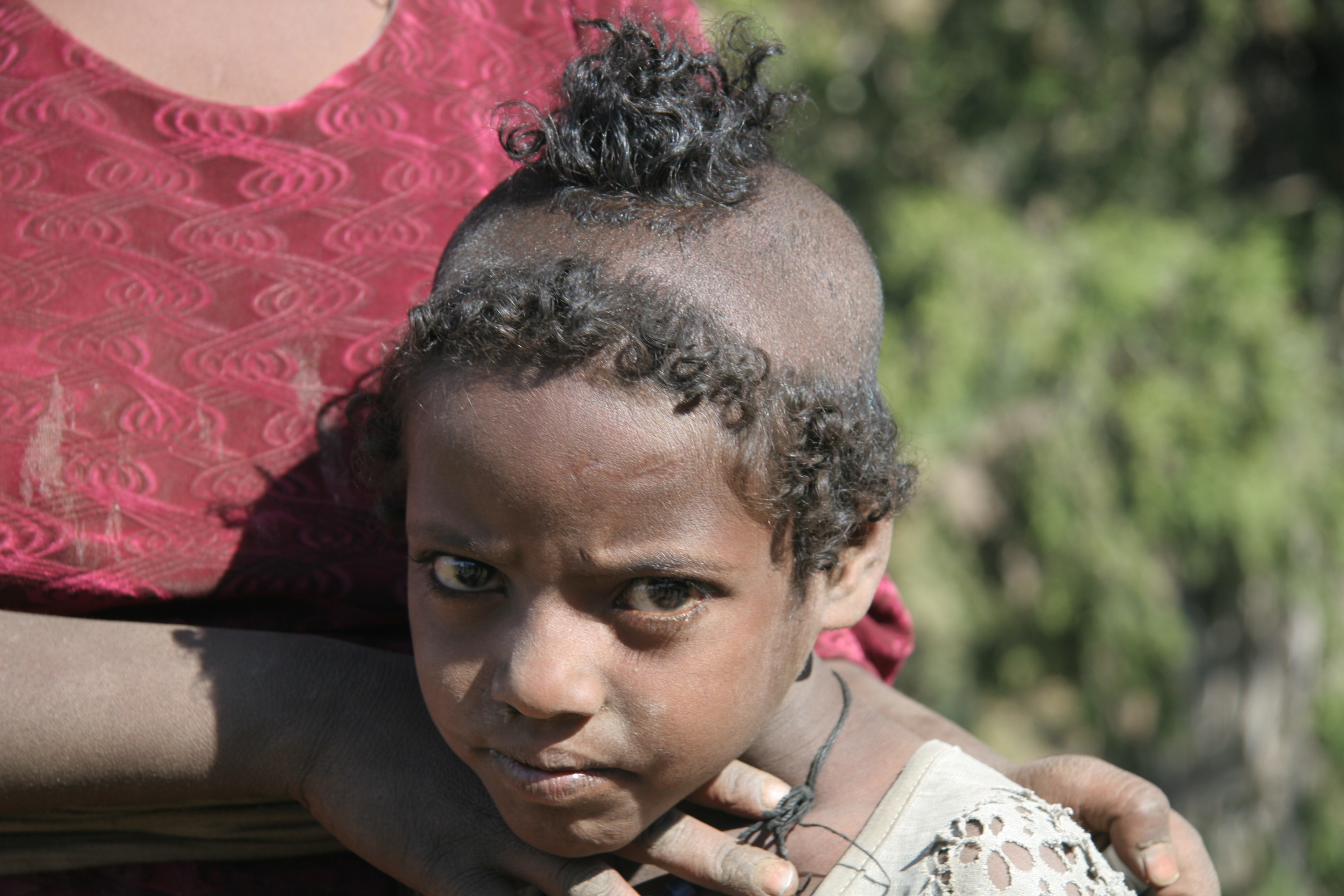
Adventurouspirits
The view from the top is spectacular.
Enlarge

Adventurouspirits
This church in one of the caves is constructed of marble and wood.
Enlarge
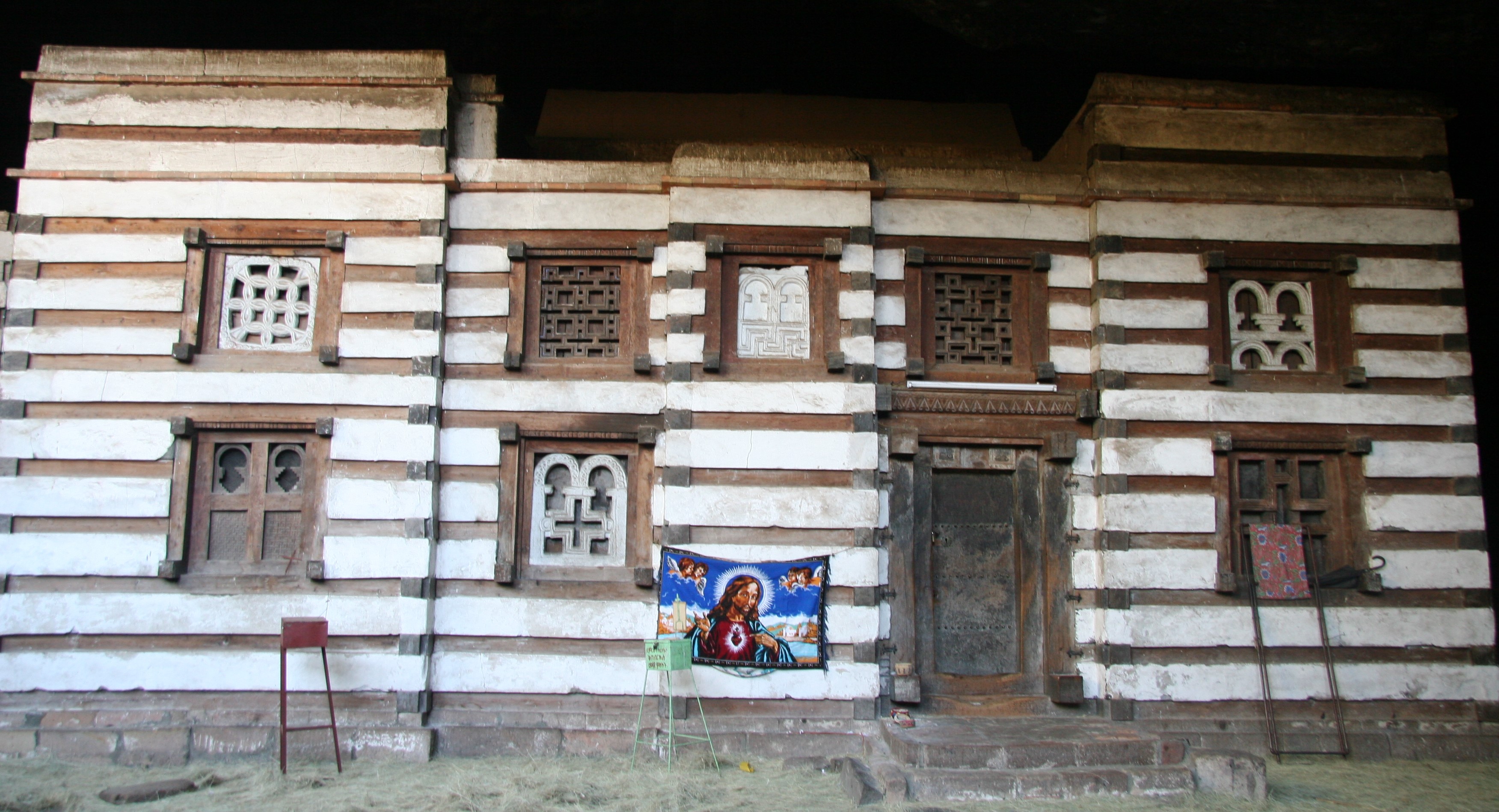
Adventurouspirits
Mesfin very kindly asks us to come to his house to meet his family. We are pleasantly surprised to see that they have arranged to welcome us with their traditional coffee ceremony, which is a great honour. They roast the beans, grind them up then brew three cups of coffee, each one getting stronger than the previous one. We also shared in some Injera.
Enlarge
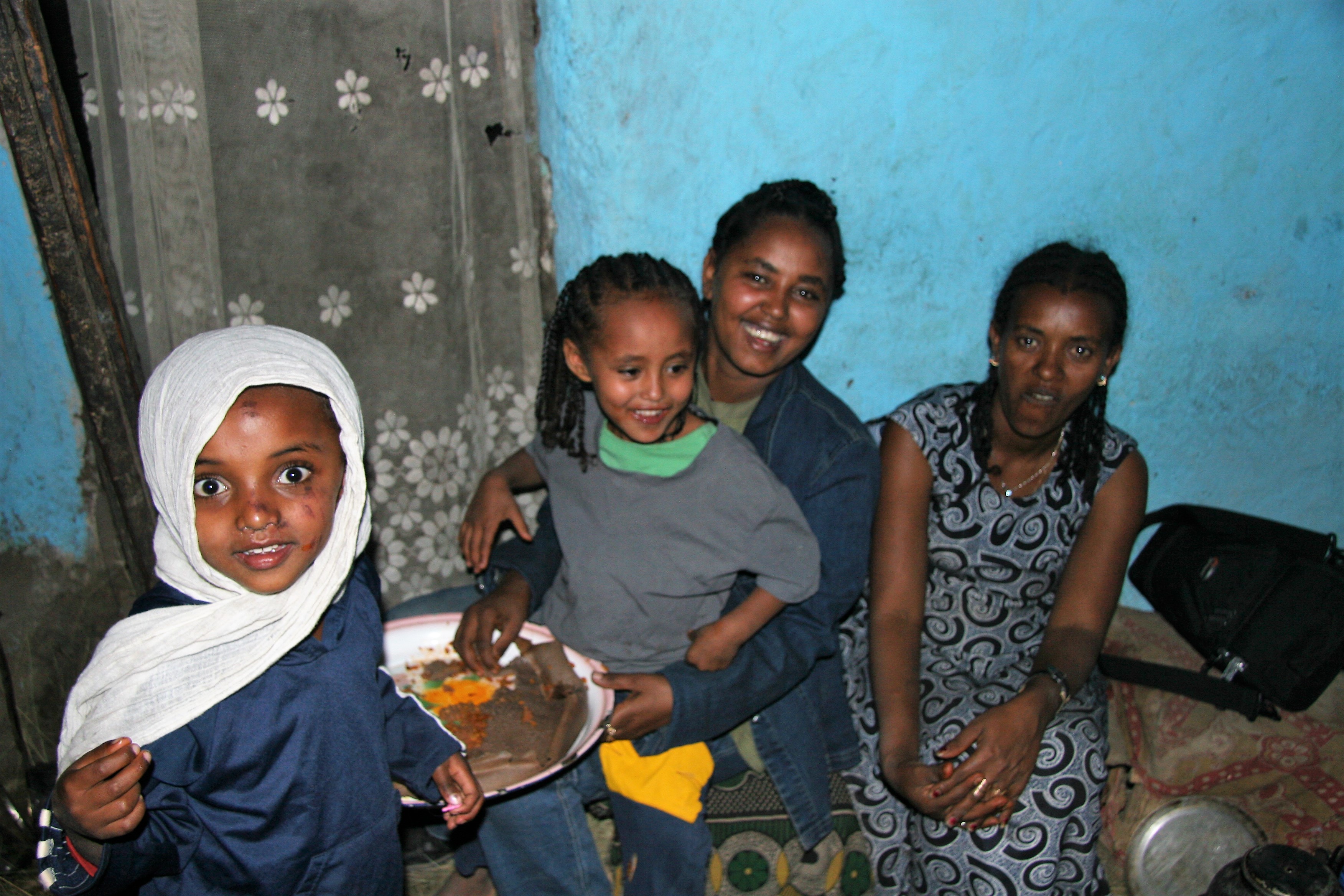
Advenmturouspirits
Enlarge
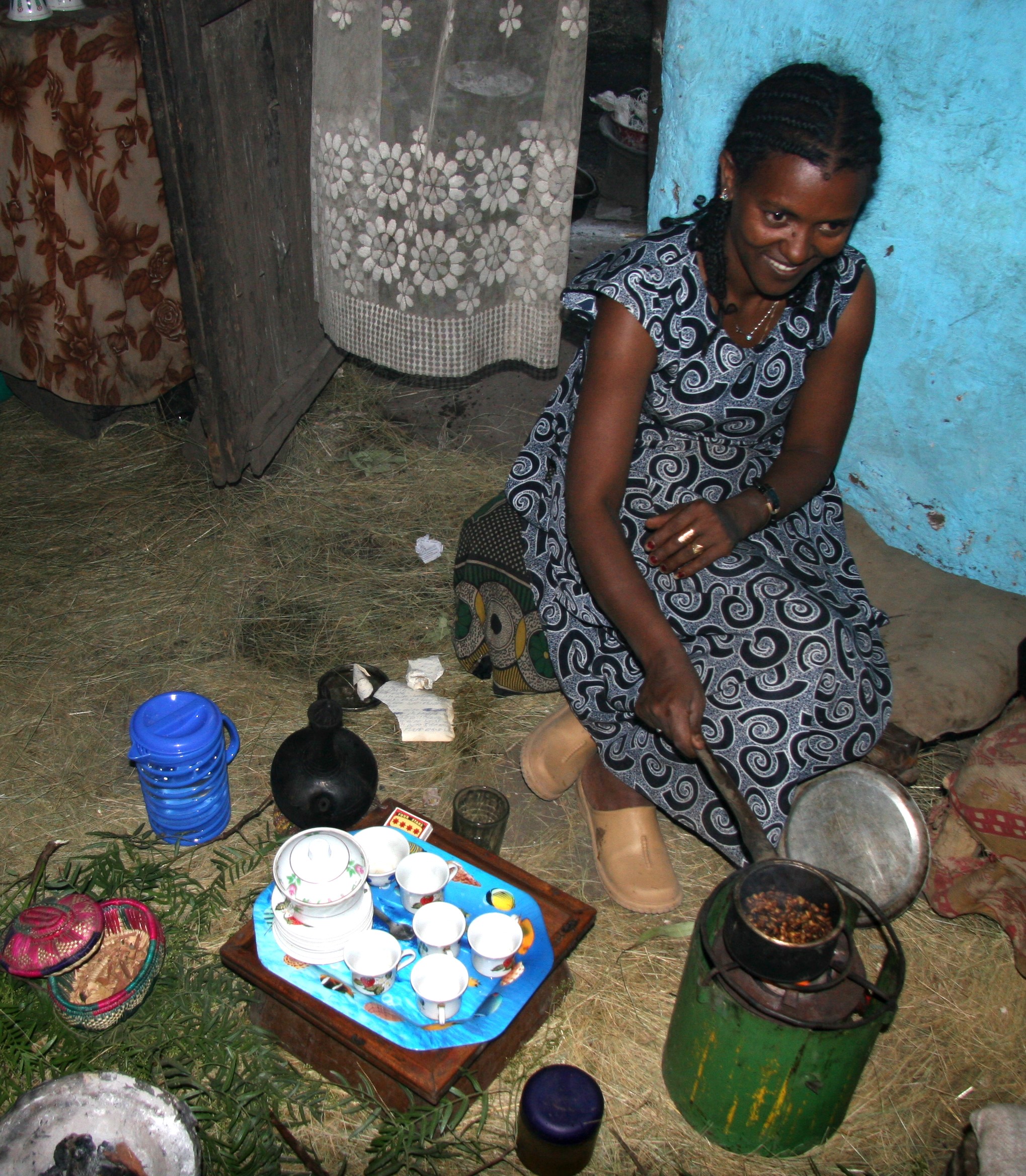
Adventurouspirits
On our last night in Lalibela we climb up to a view point to watch the sun setting and reflect on what we have seen in this remarkable place.
Enlarge

Adventurouspirits
In our return to Gondar we say goodbye to our fellow travellers and head for the Sudanese border at Metema, 150 Kms of rough driving ahead. Unfortunately we are involved in a terrible accident when we are about 30kms from the border. This is an Overlander’s nightmare.
Enlarge
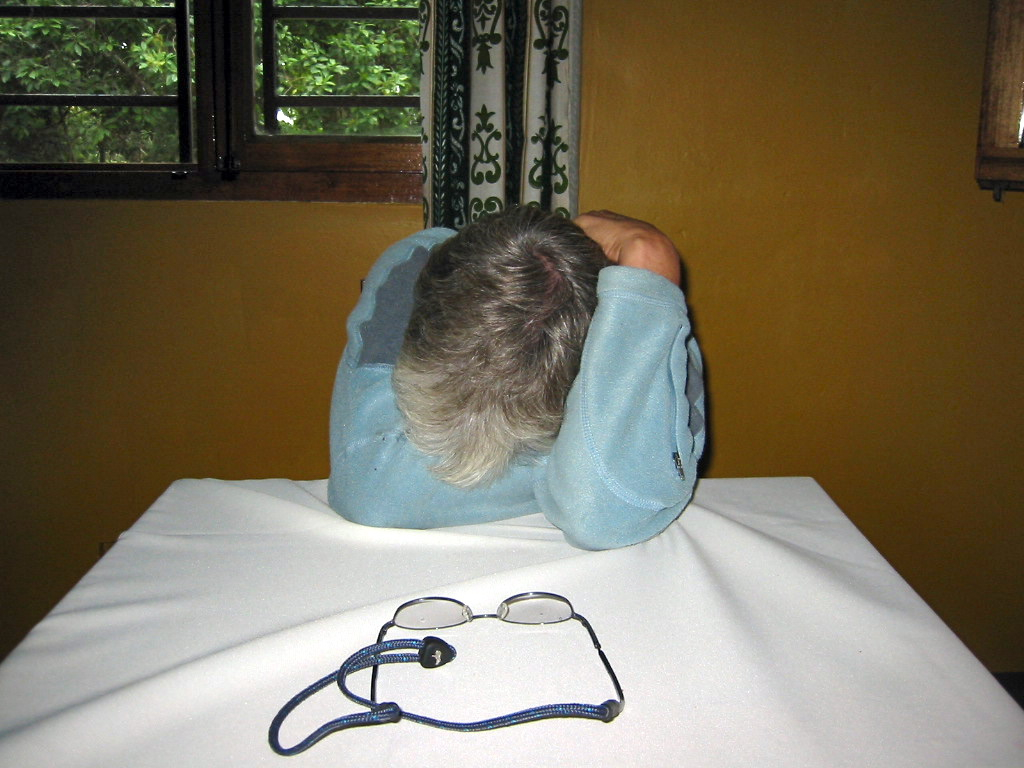
Adventurouspirits
After a very intense and emotional week were allowed to leave Ethiopia. We were escorted to the Sudanese Border post by the Ethiopian police and our interpreter.
Enlarge
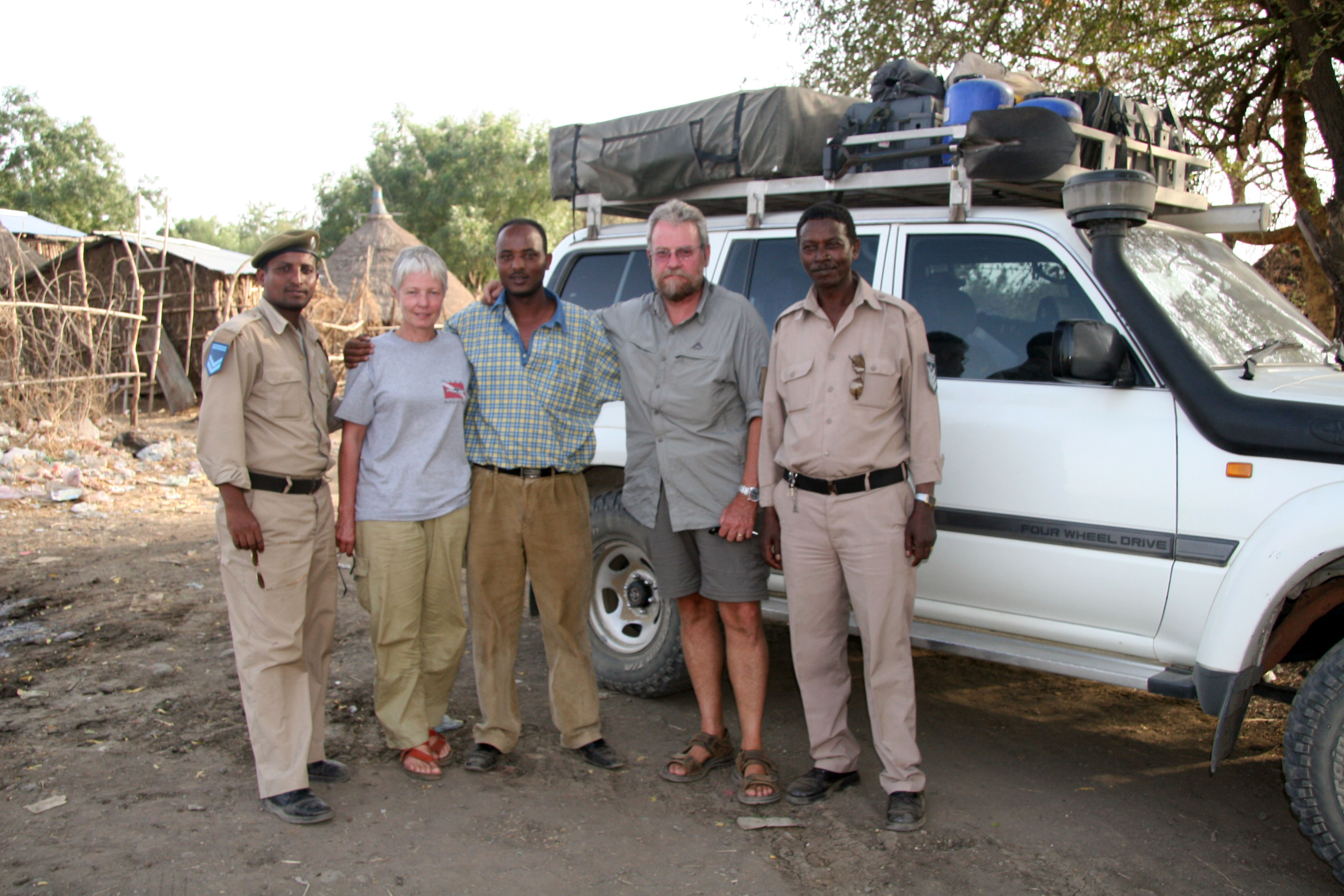
Adventurouspirits
